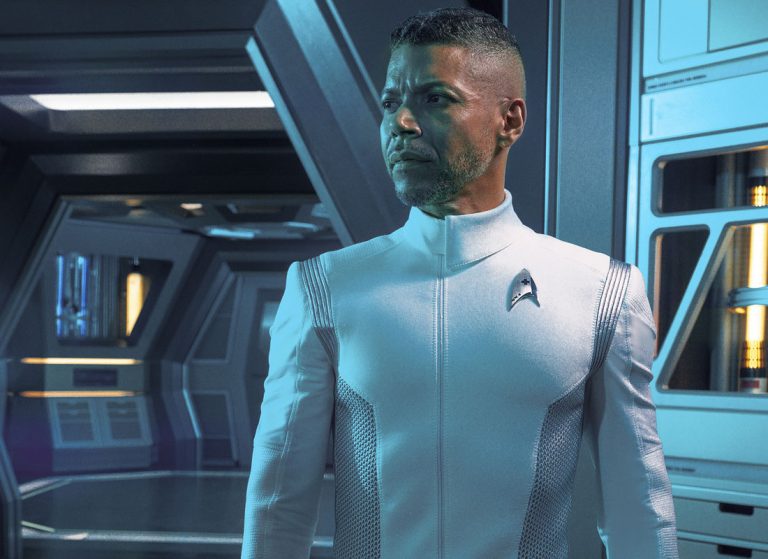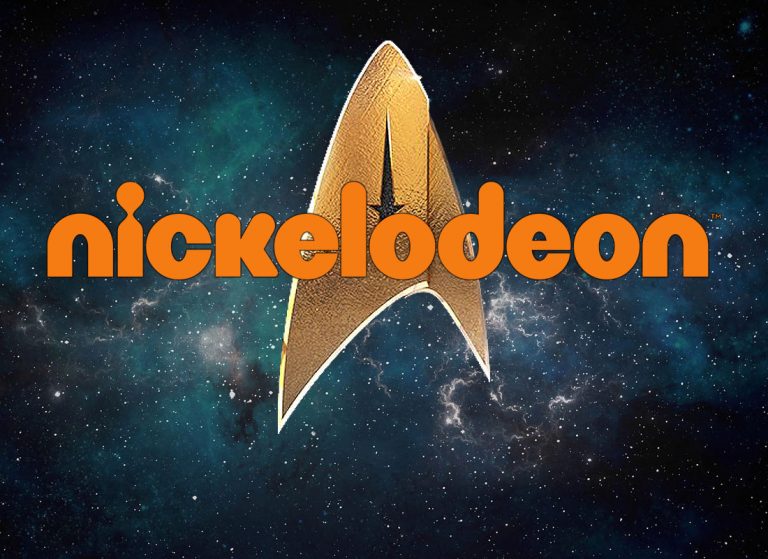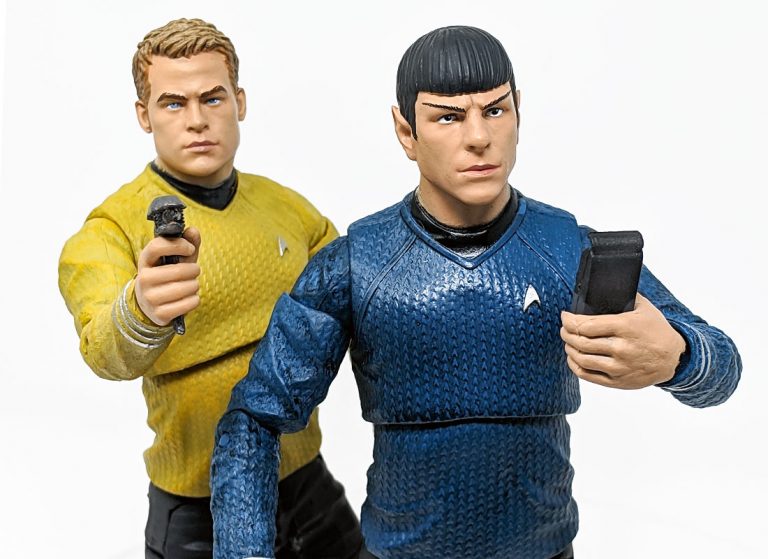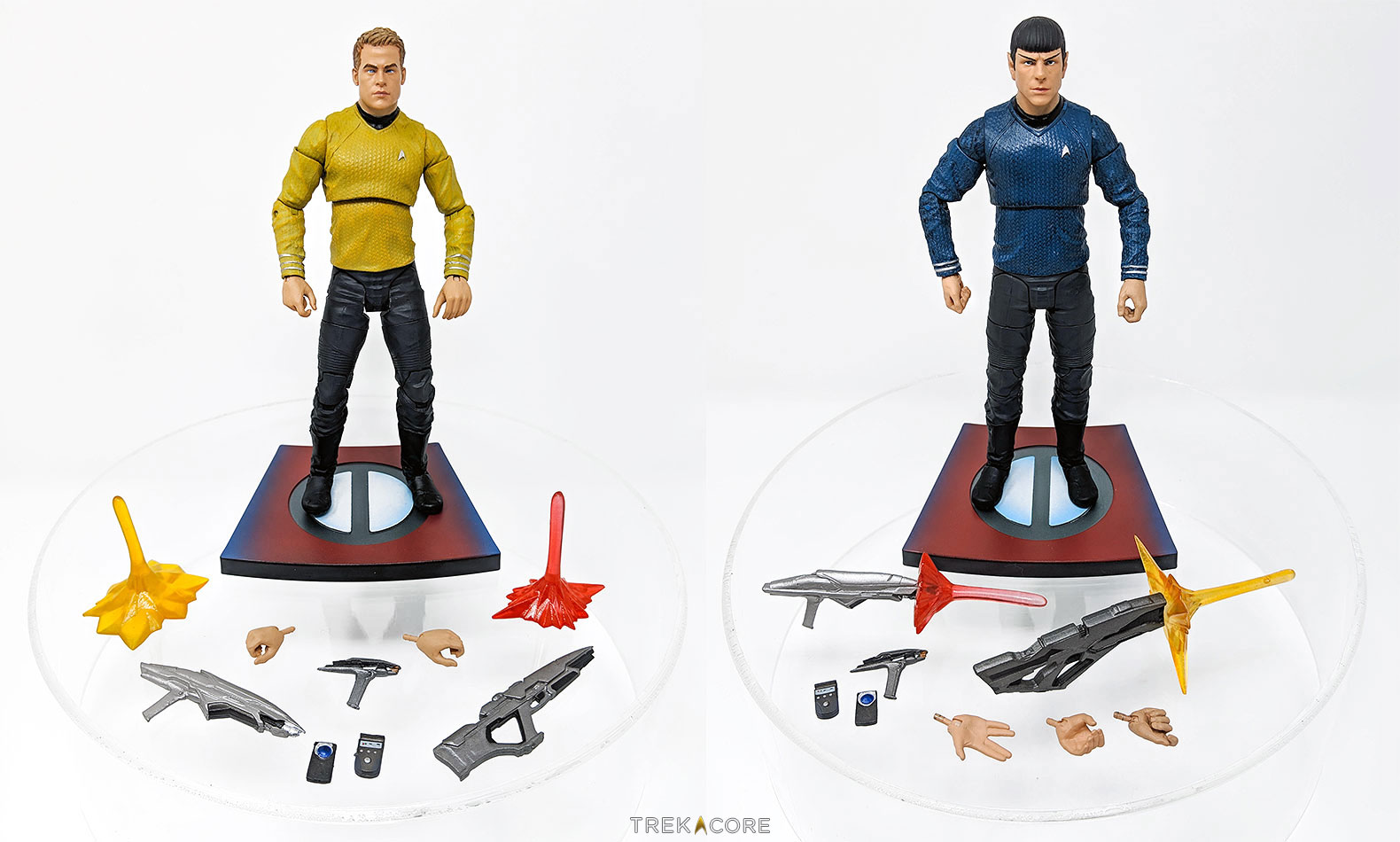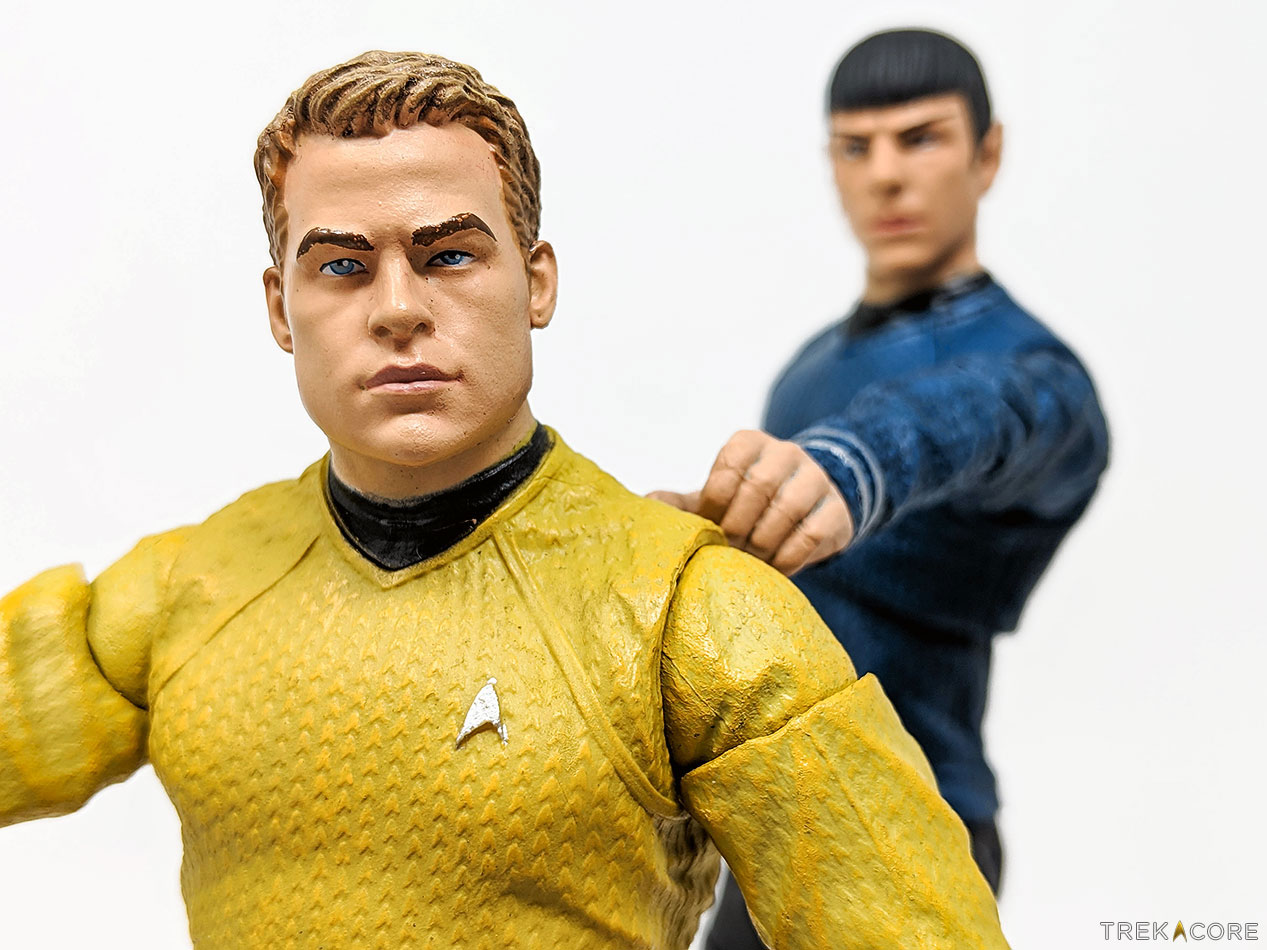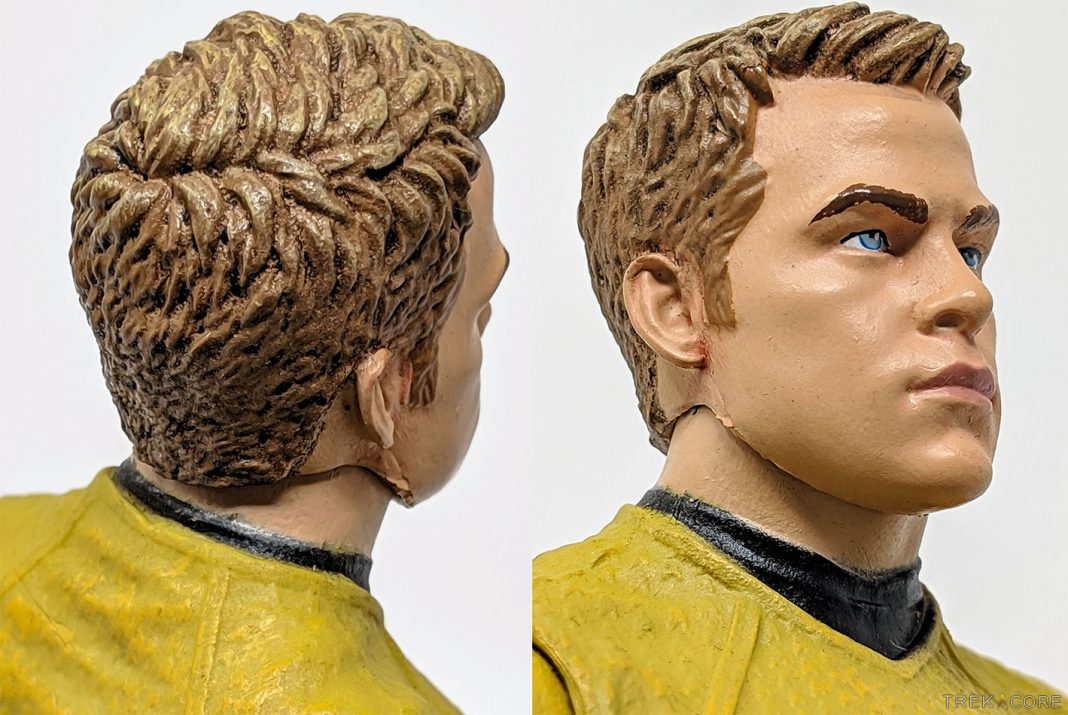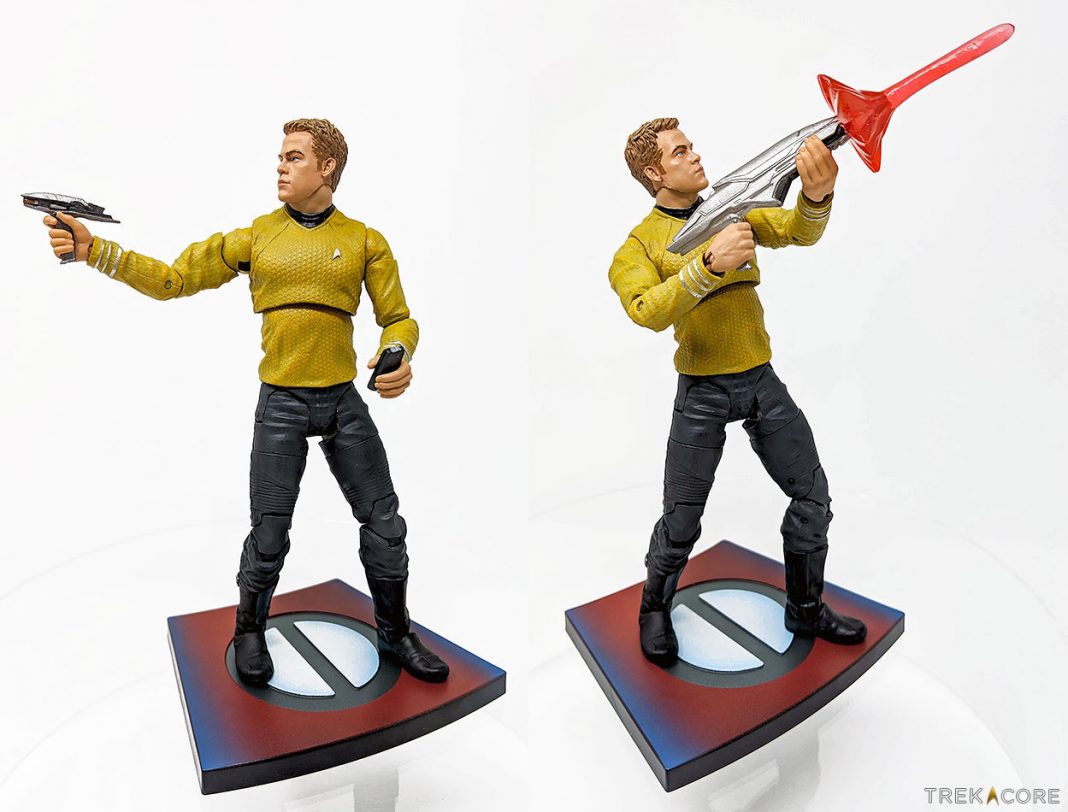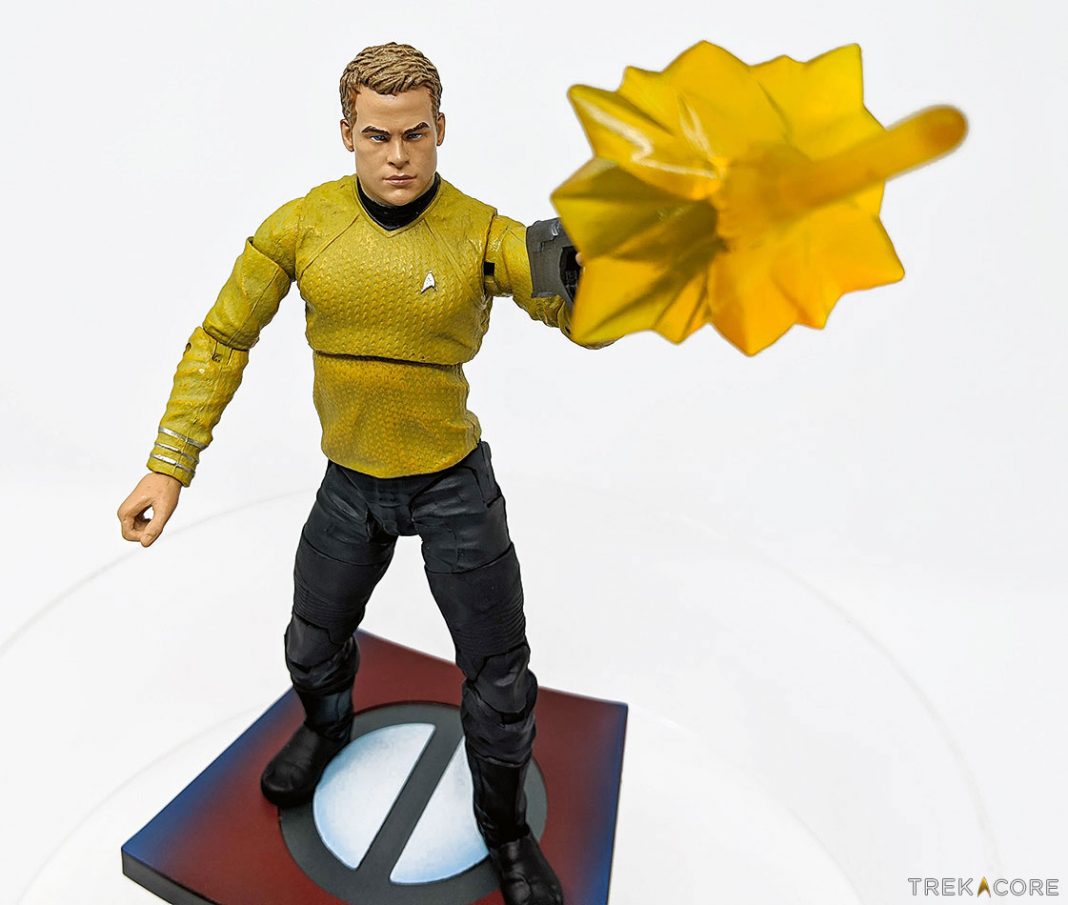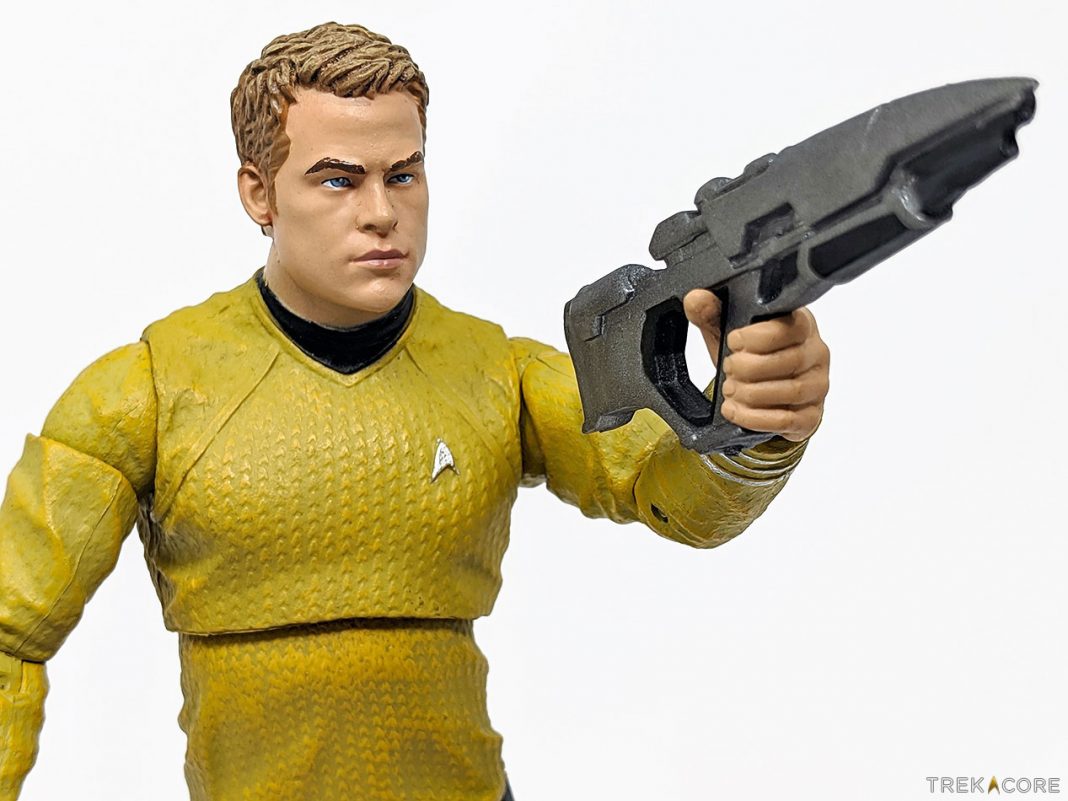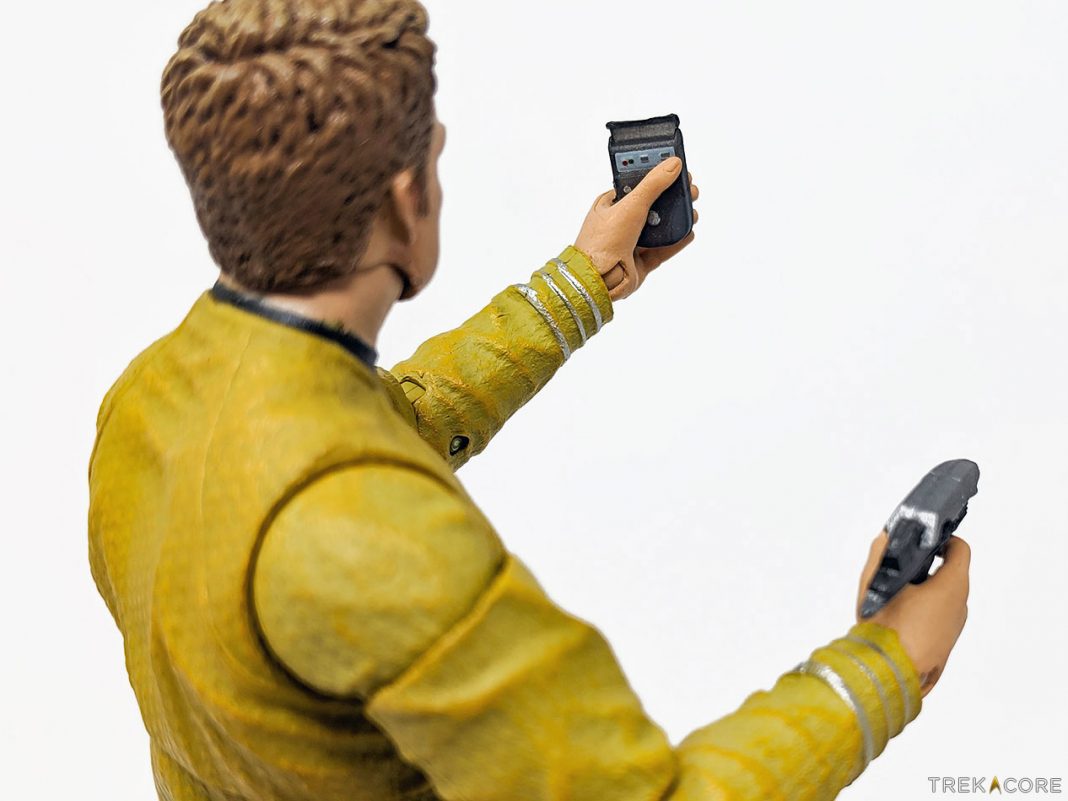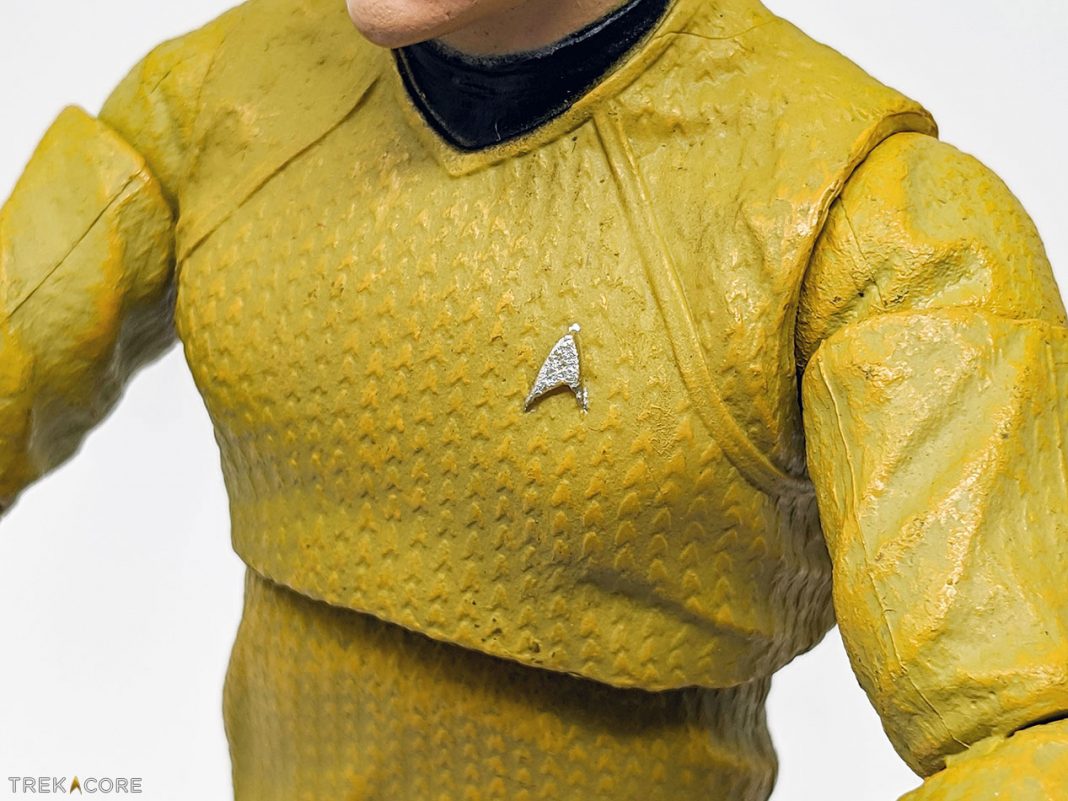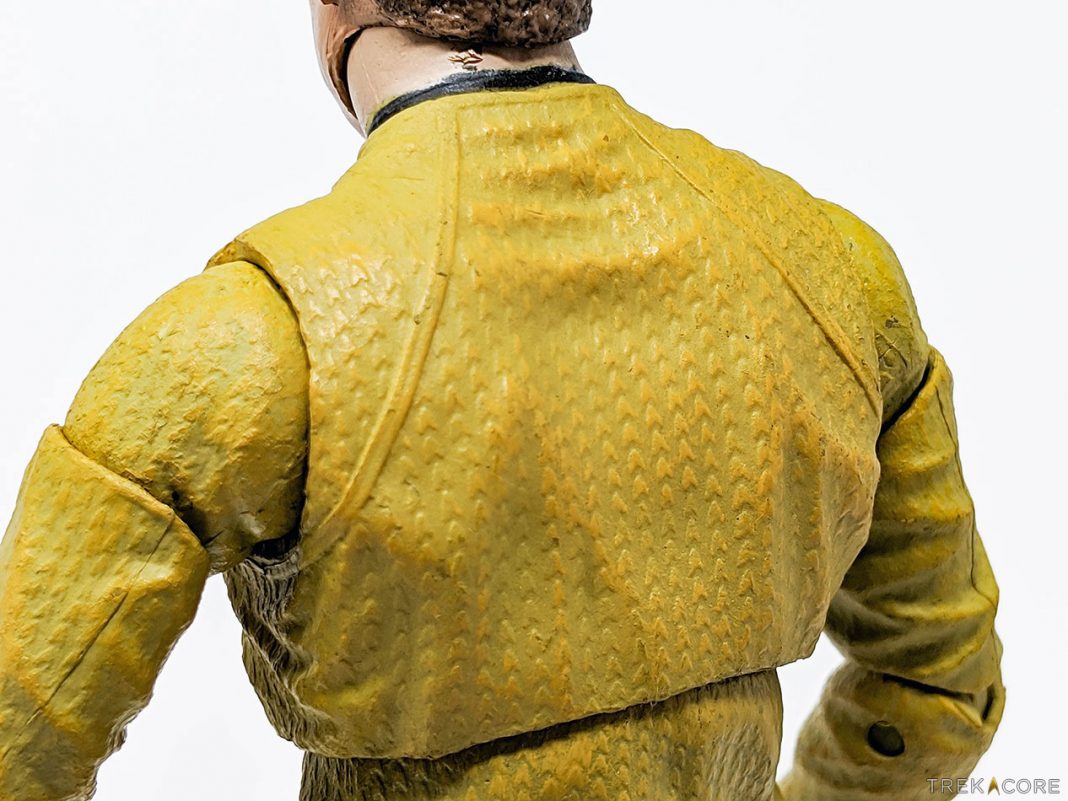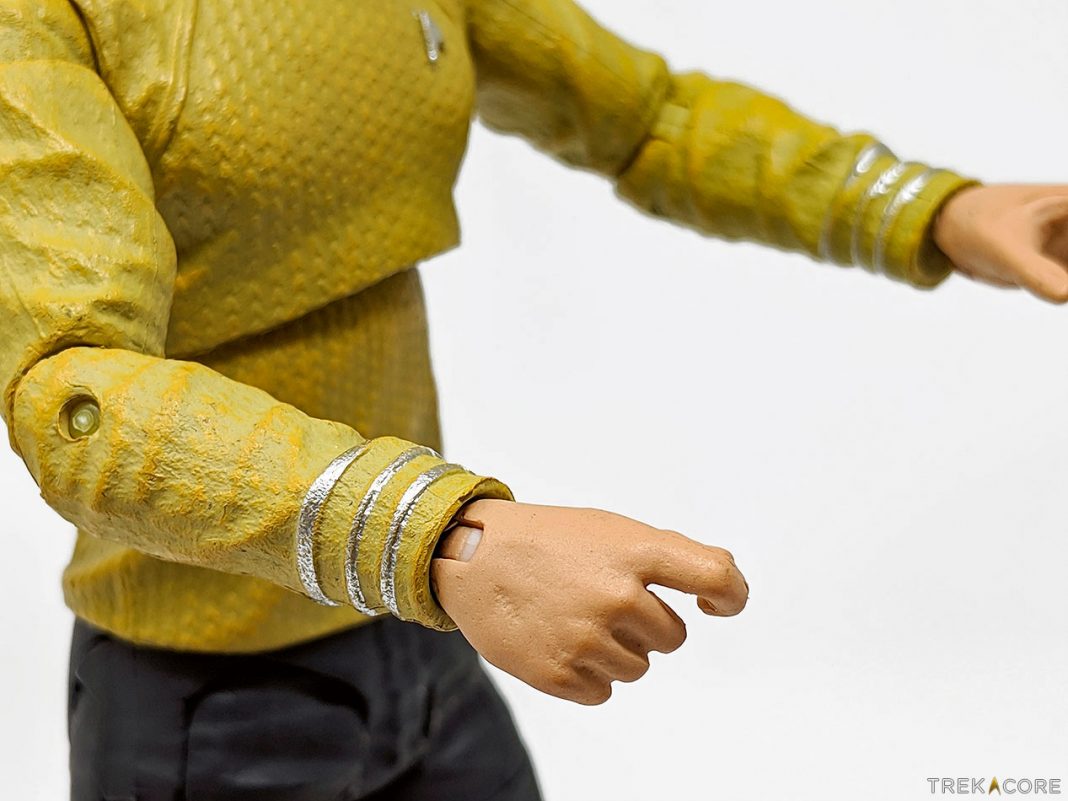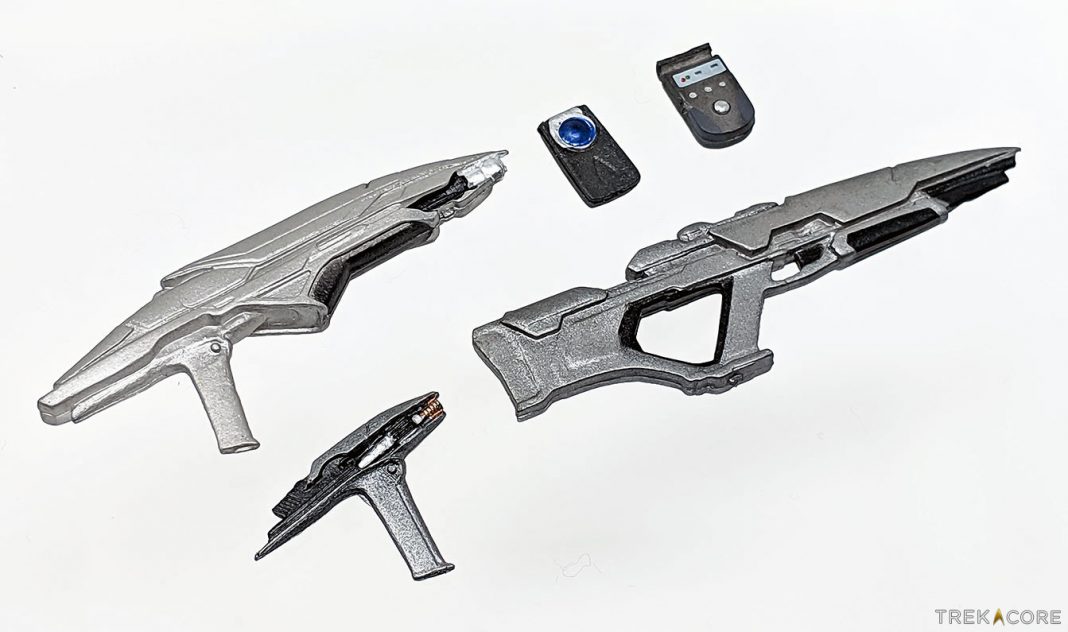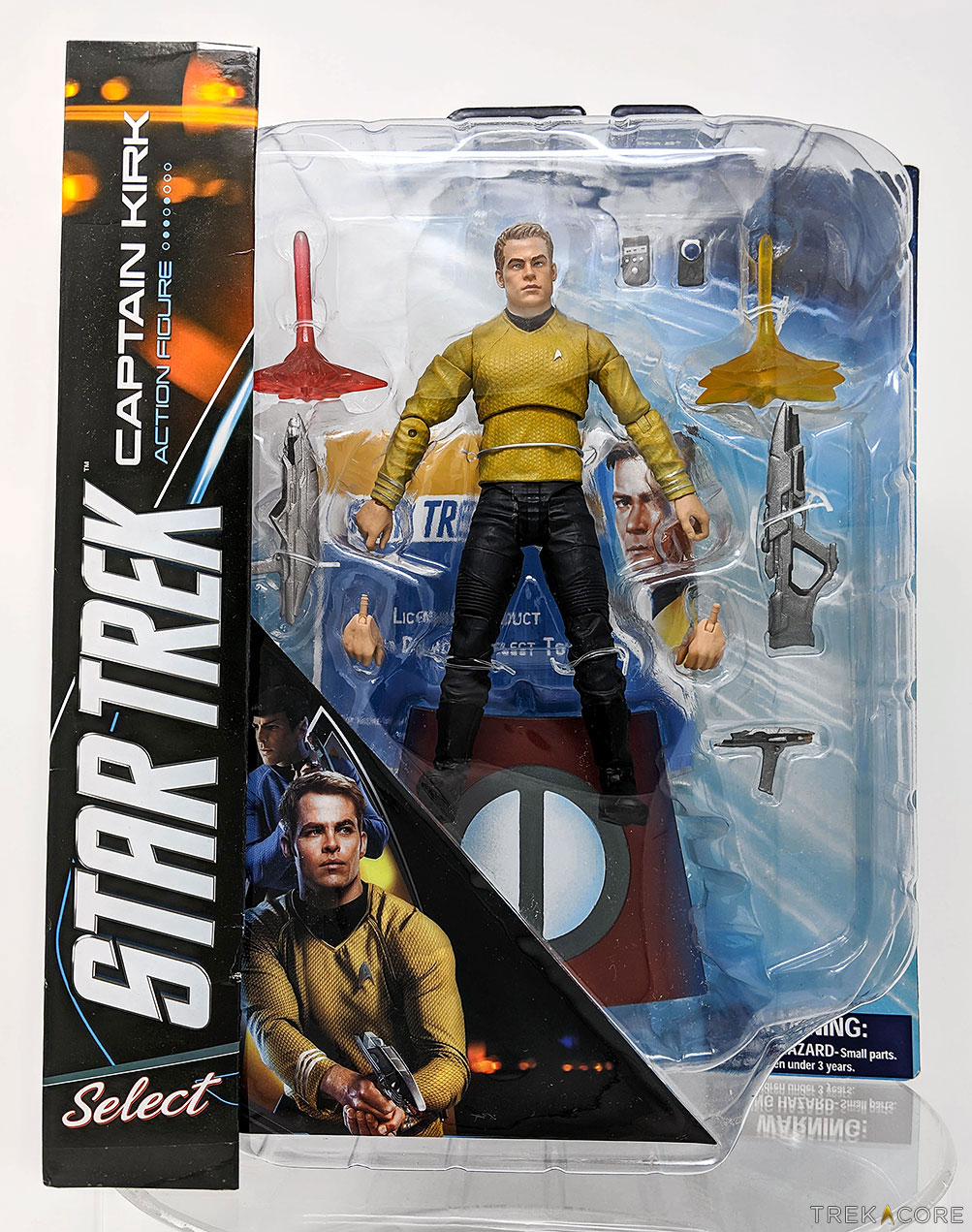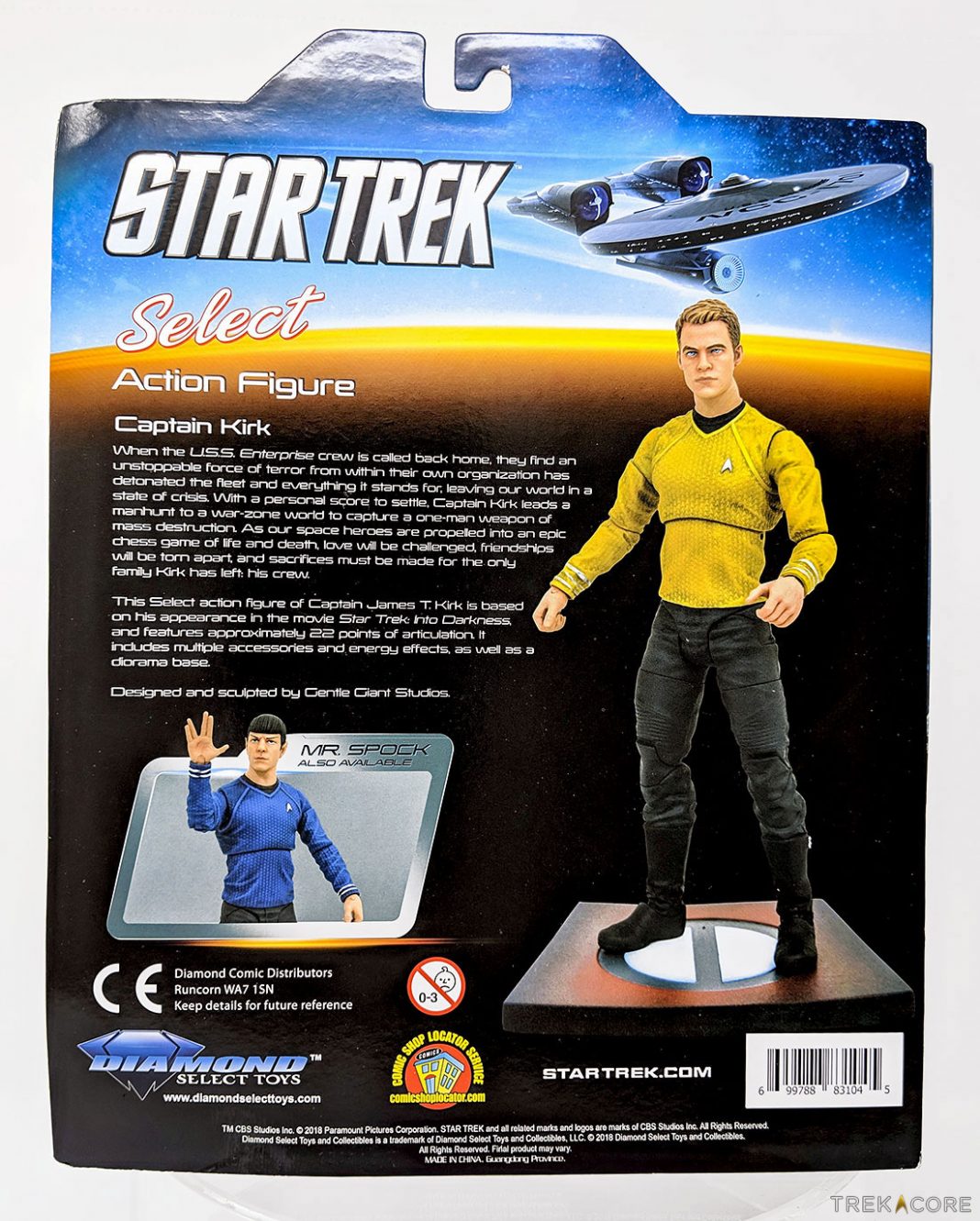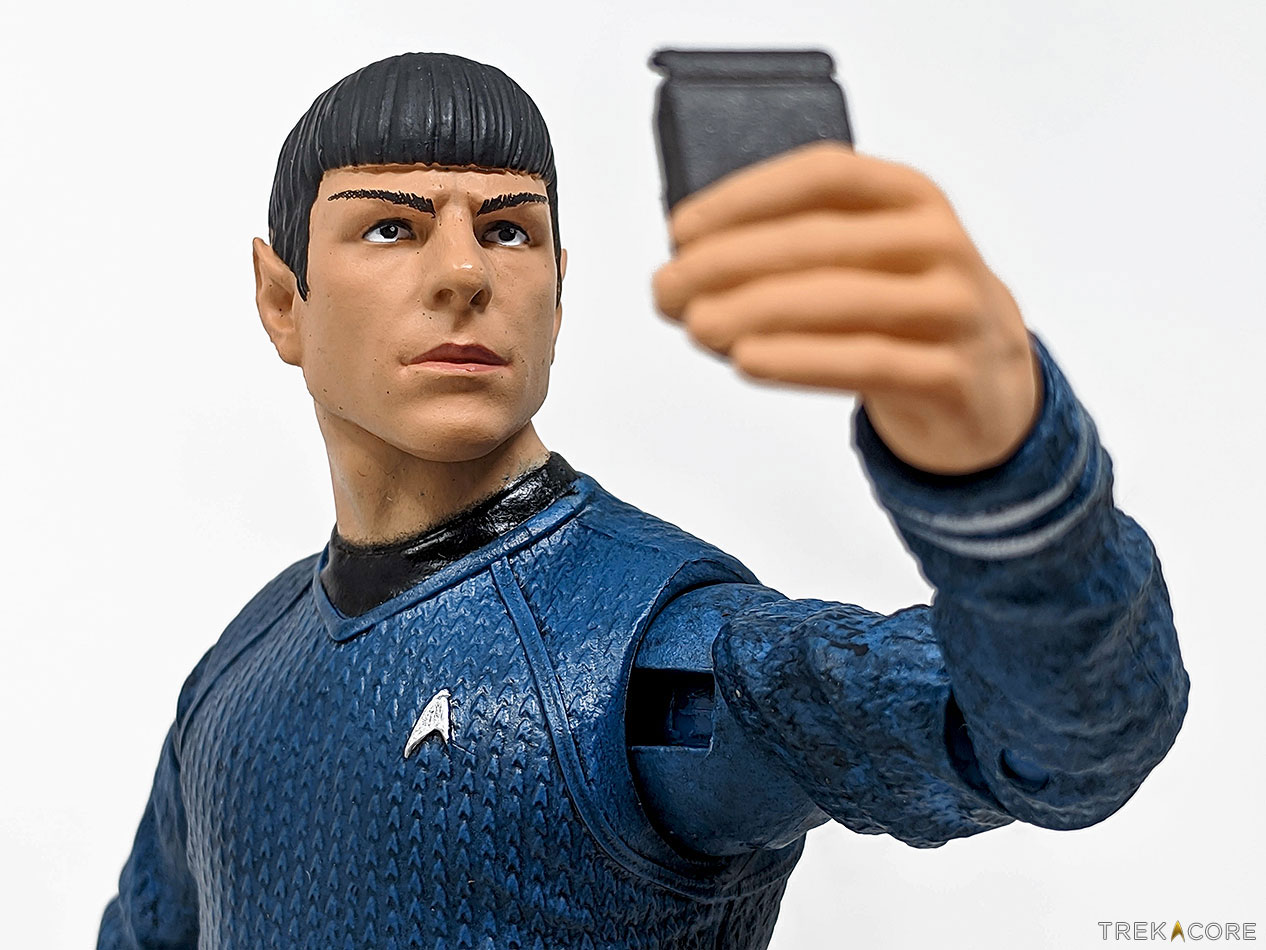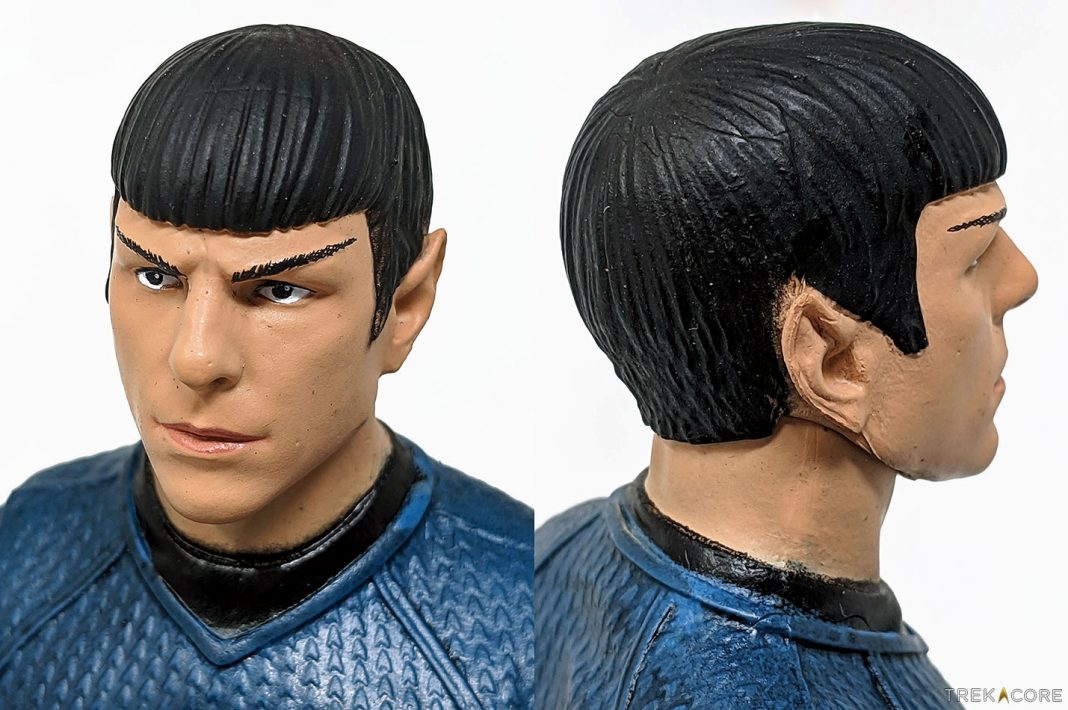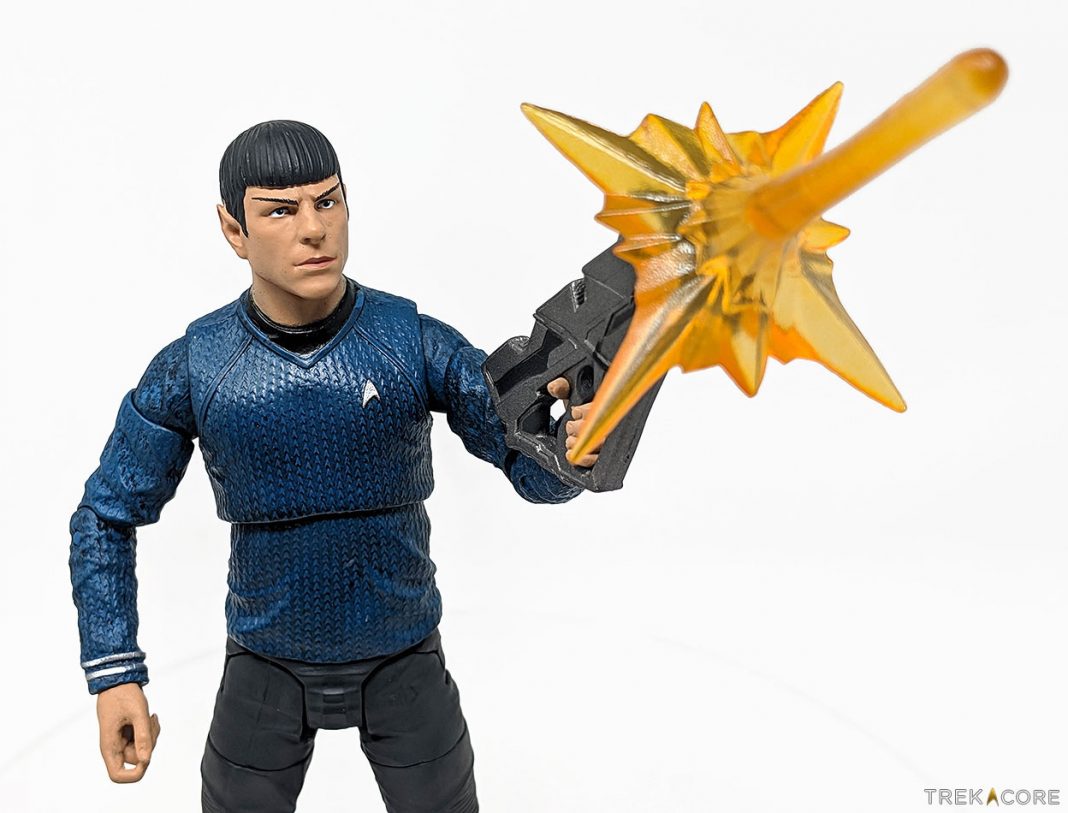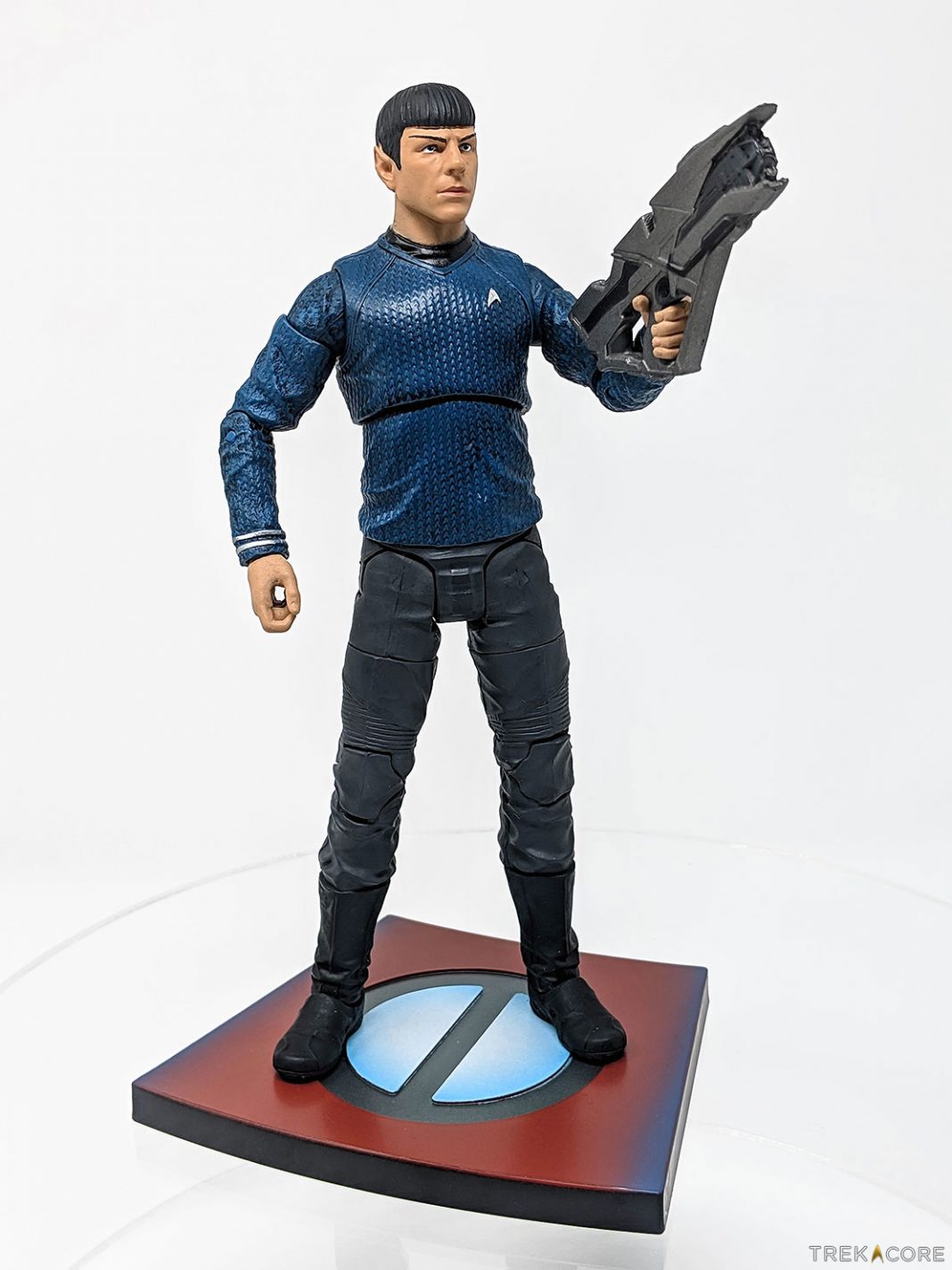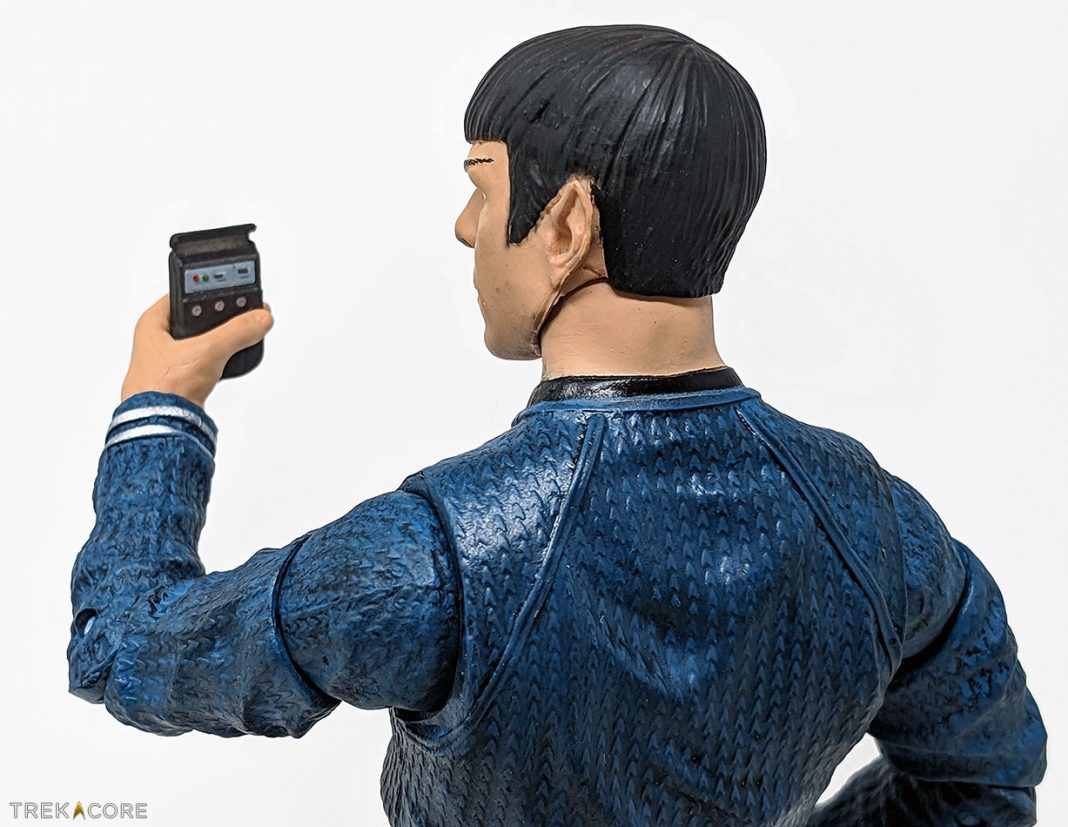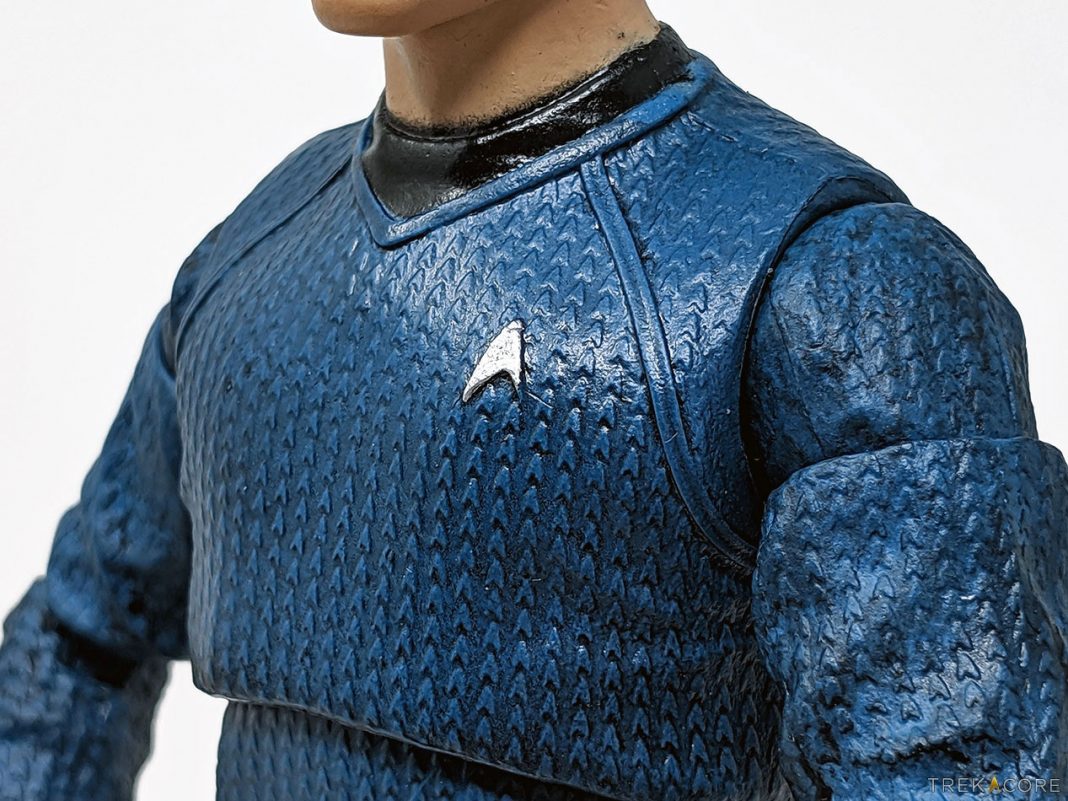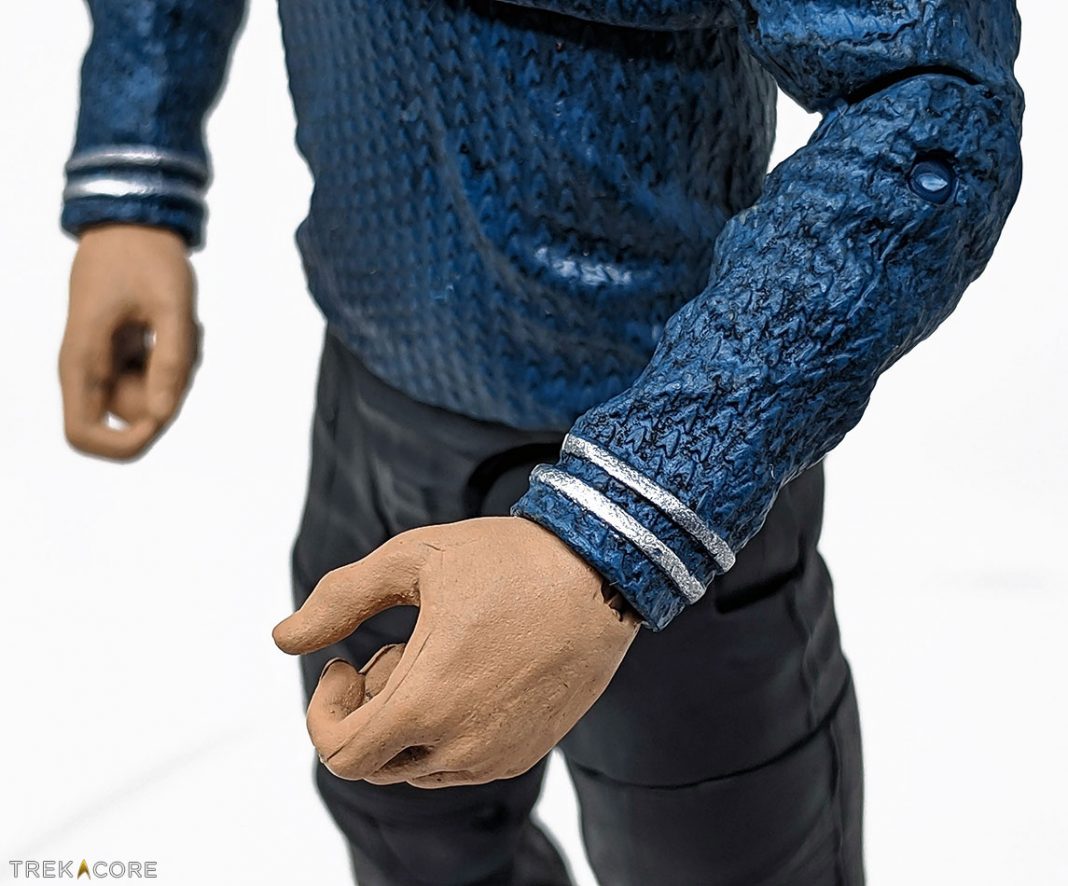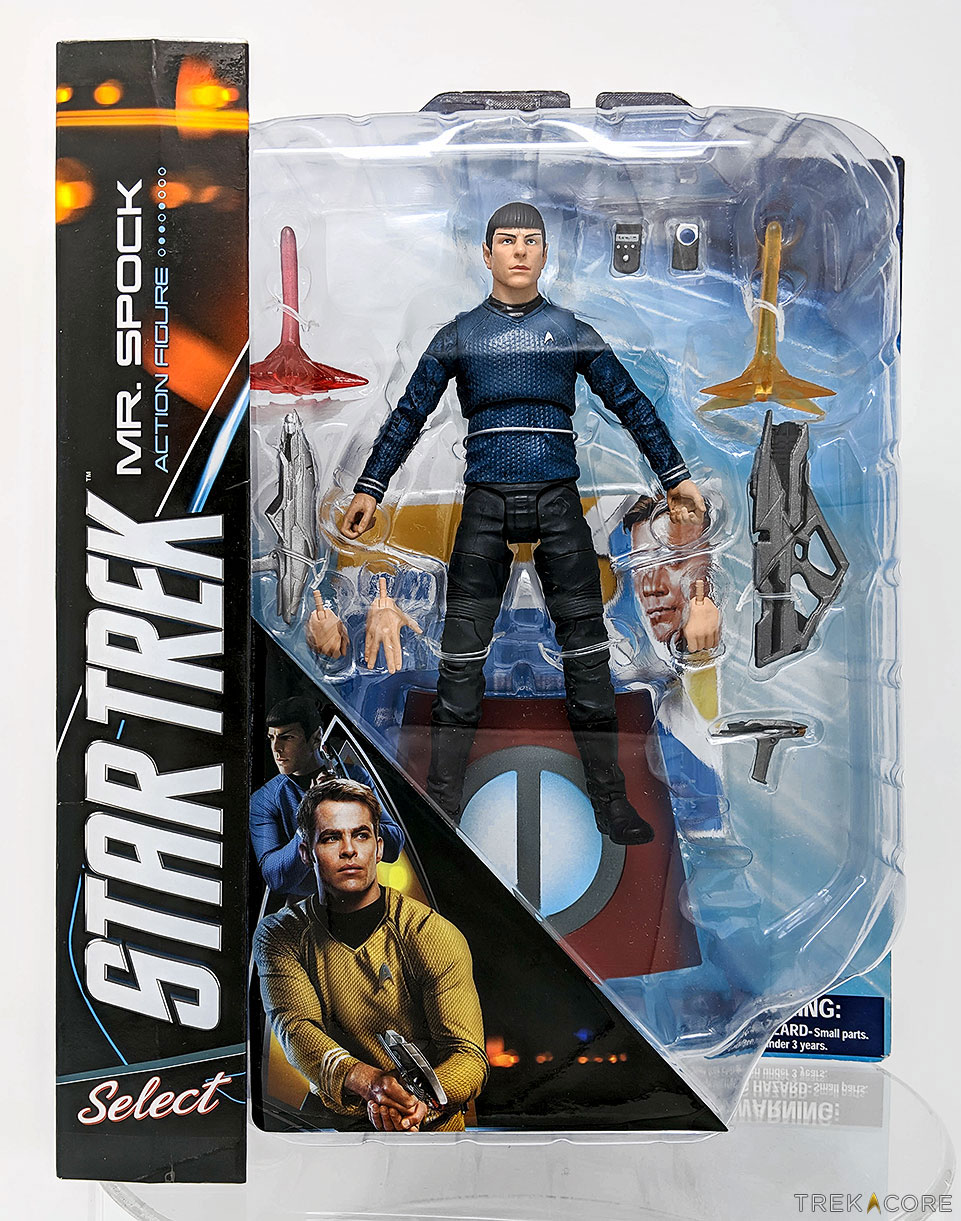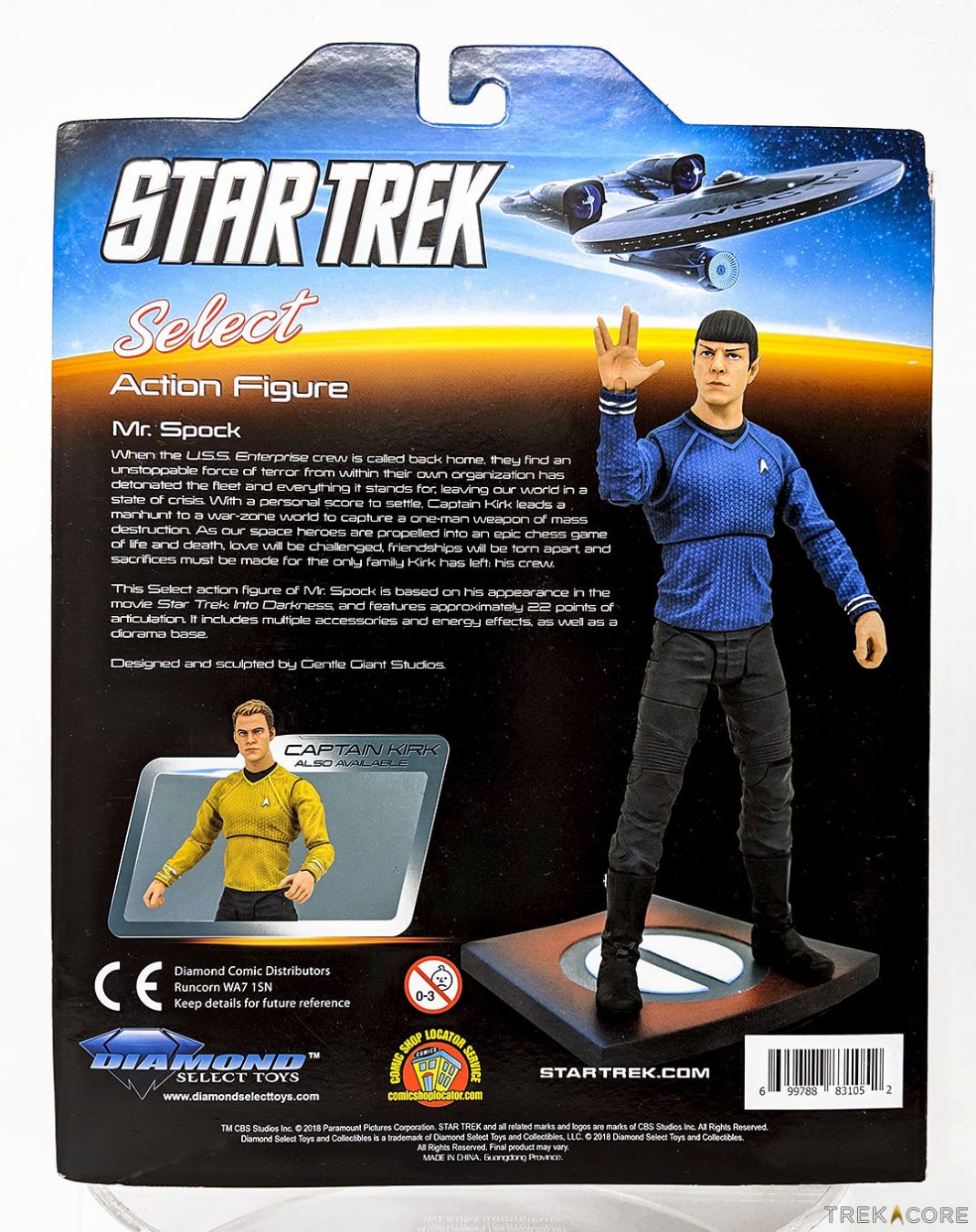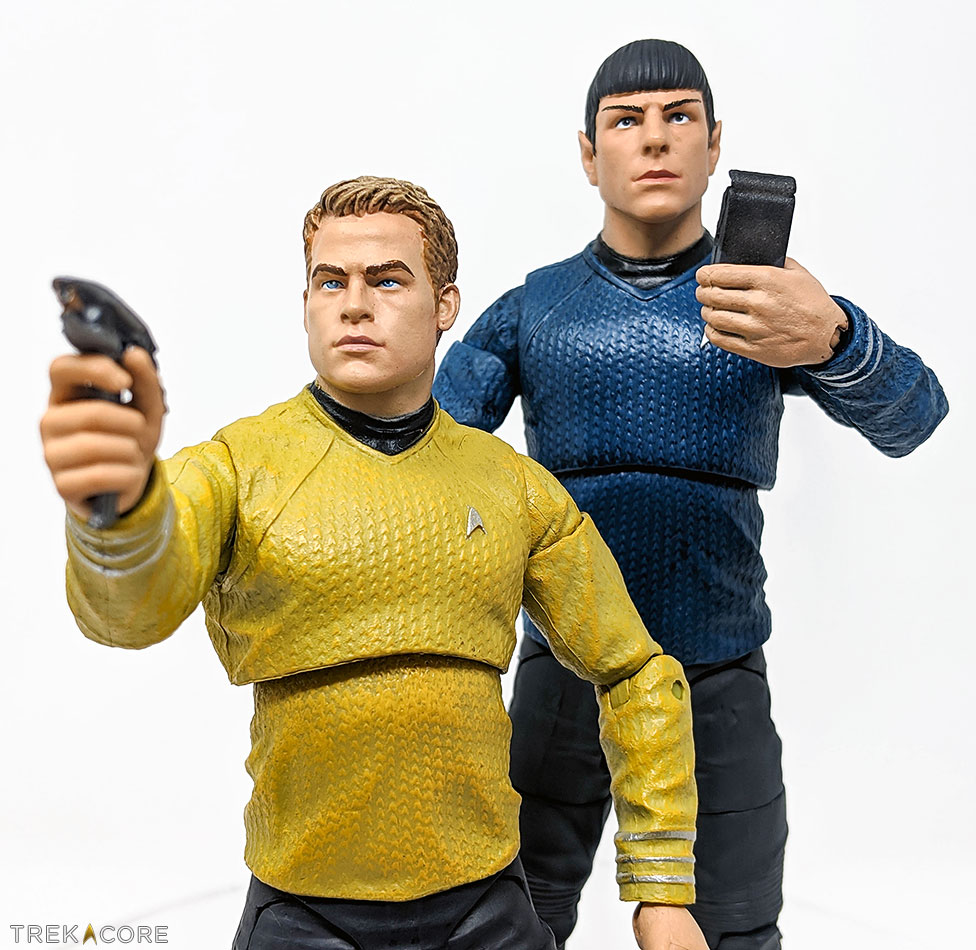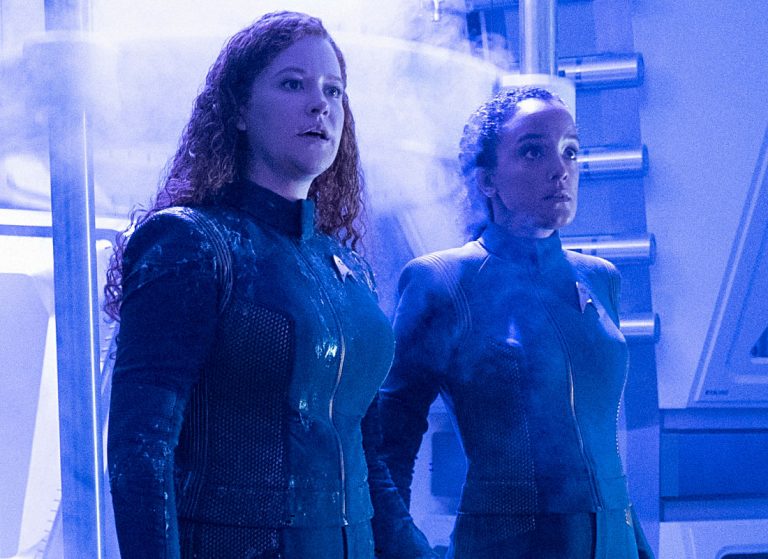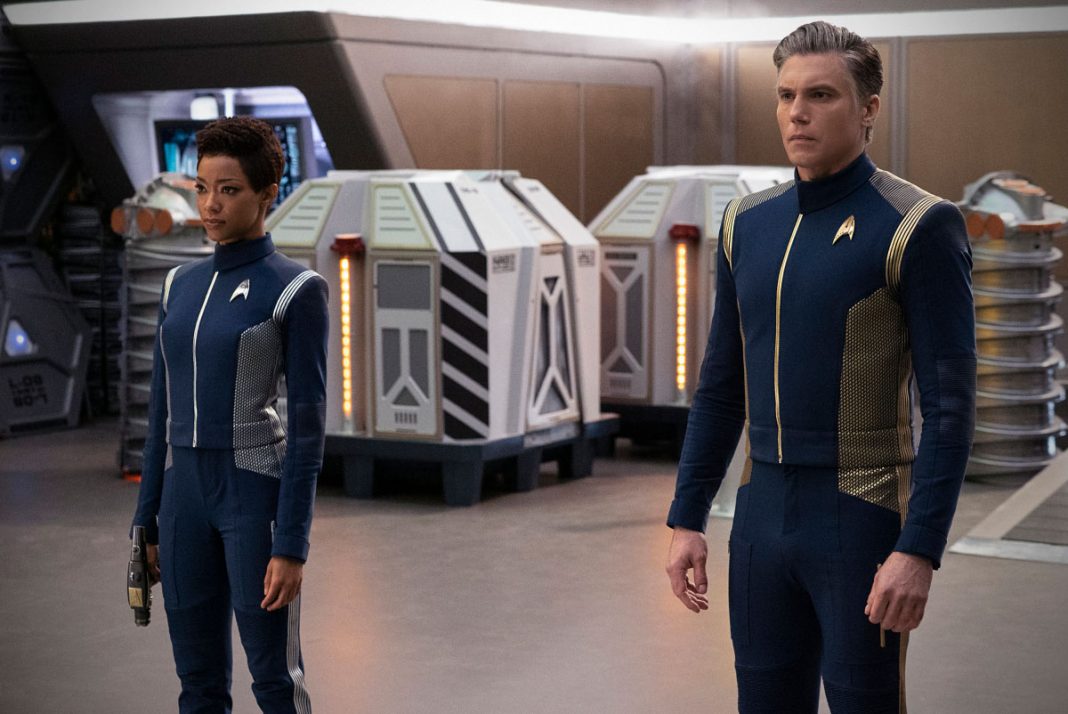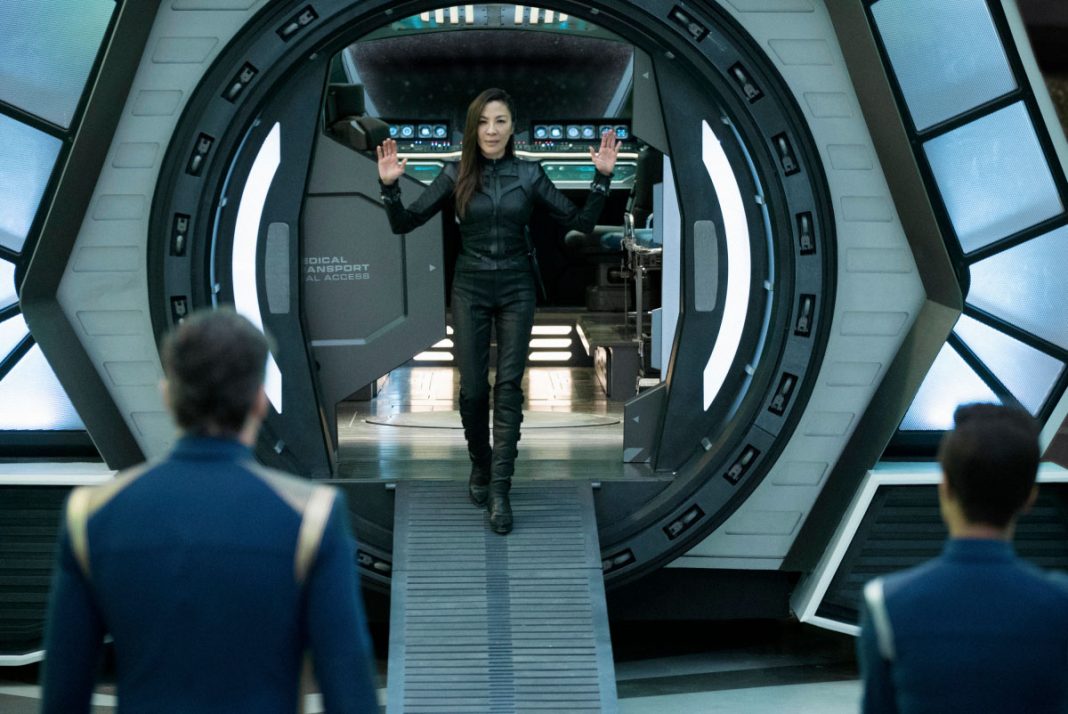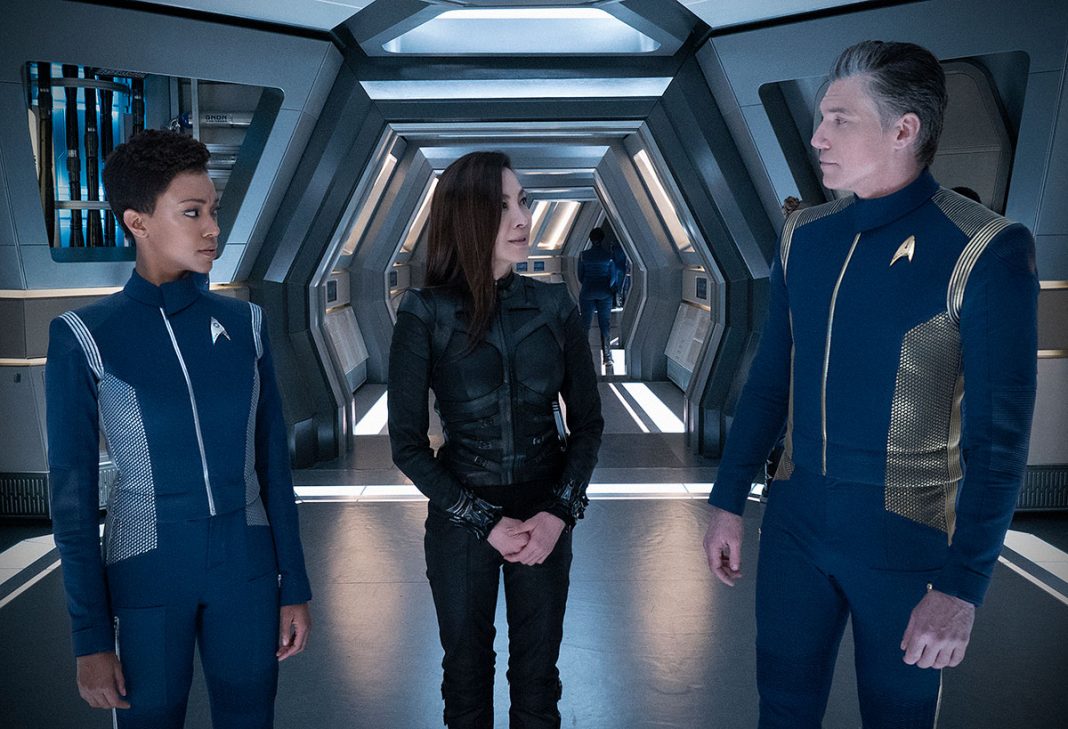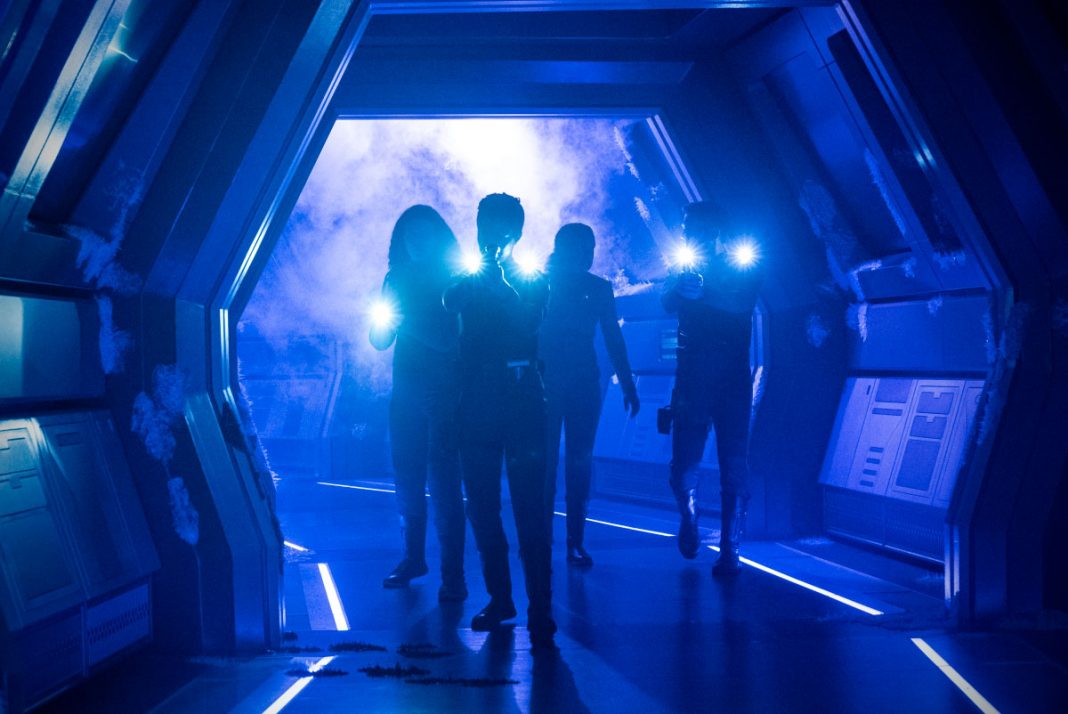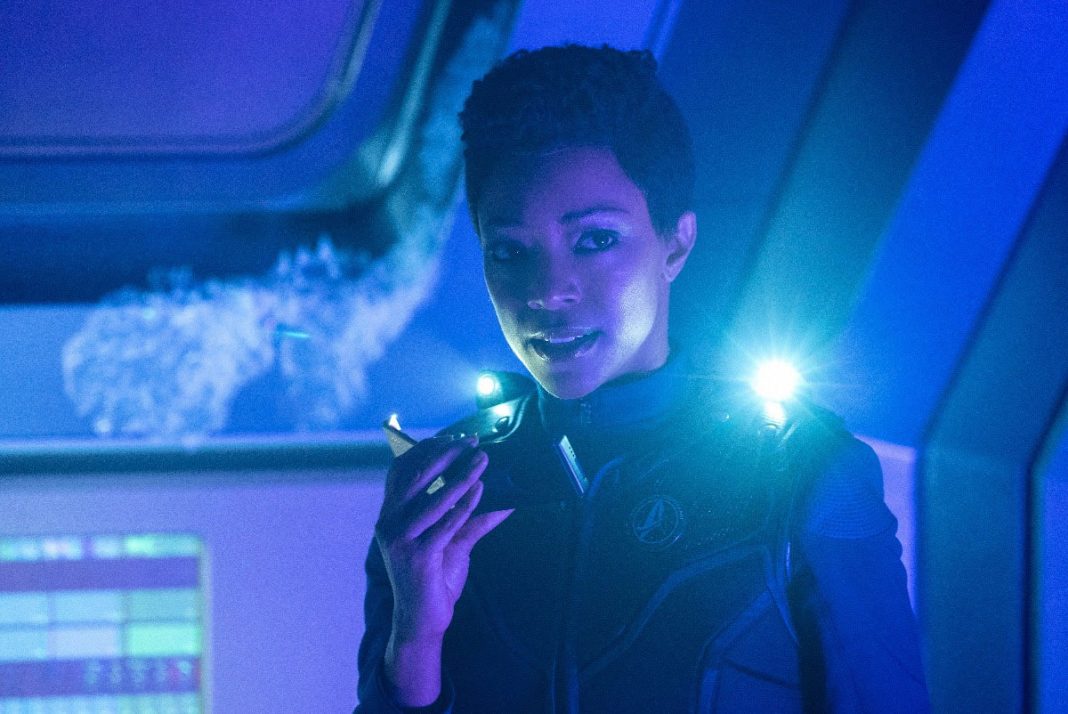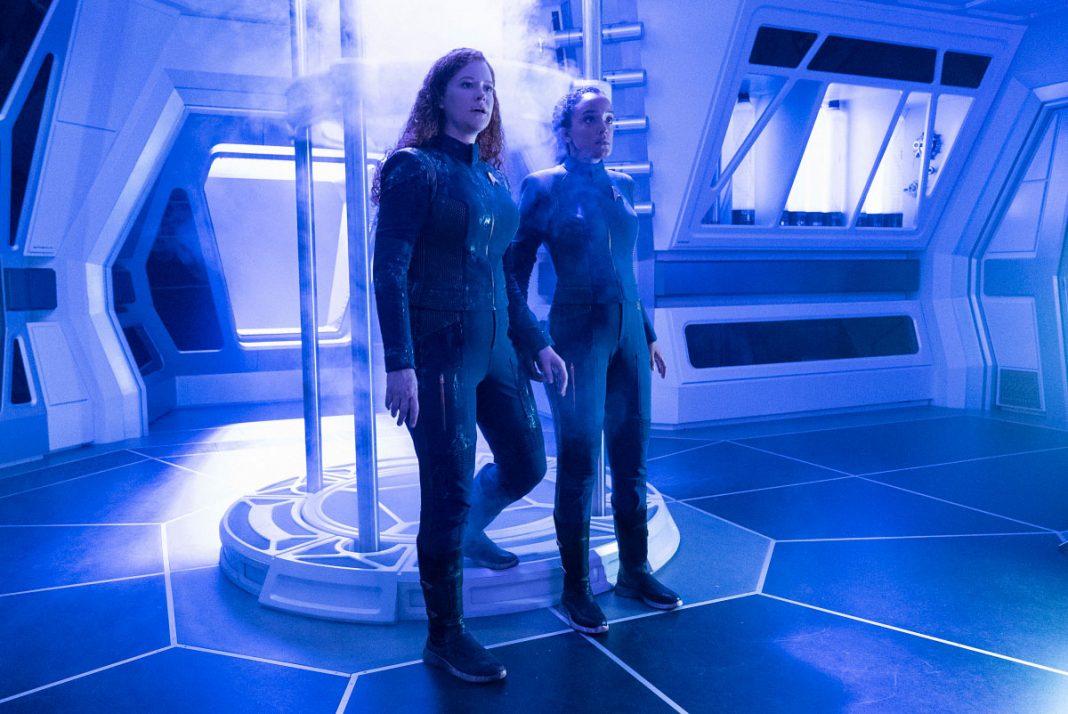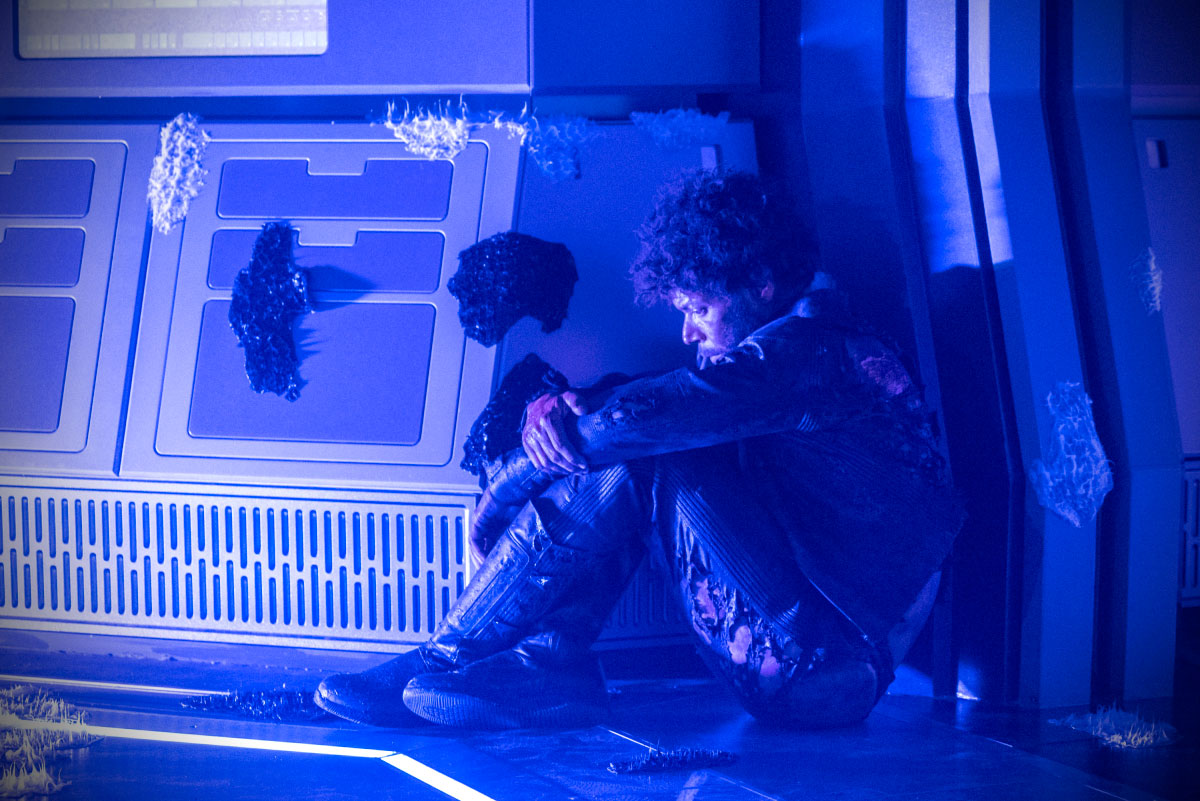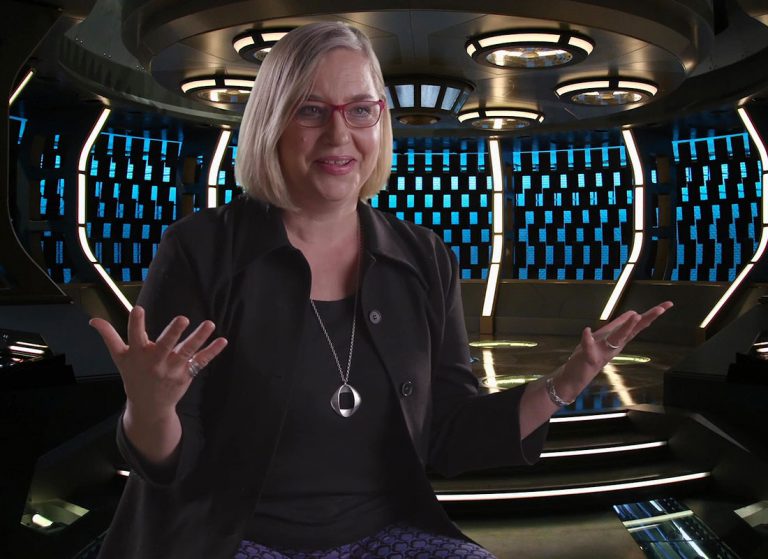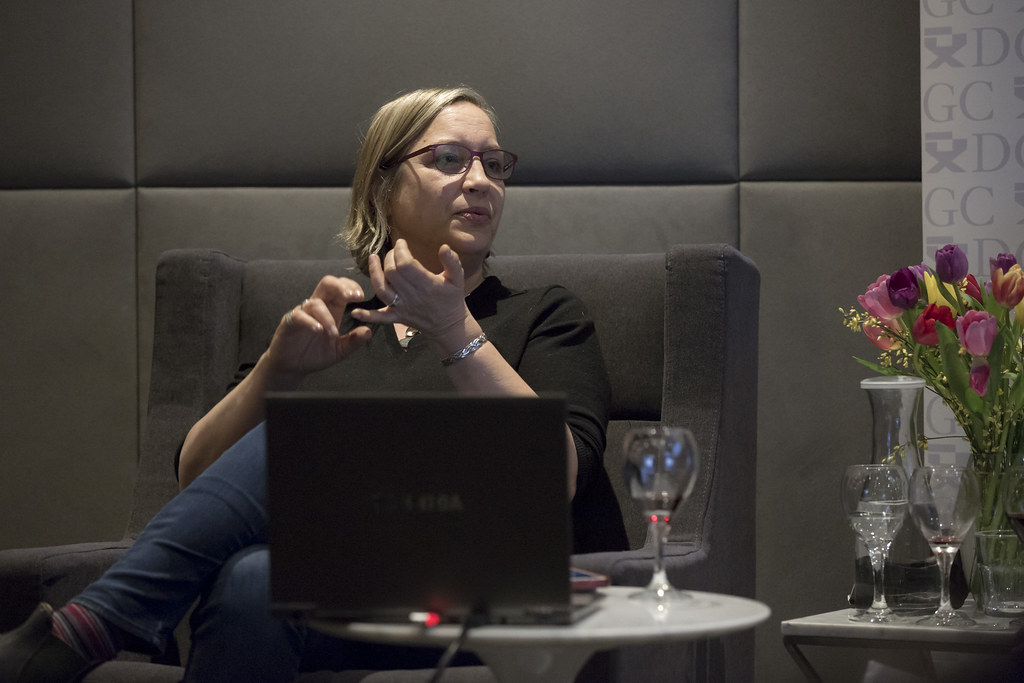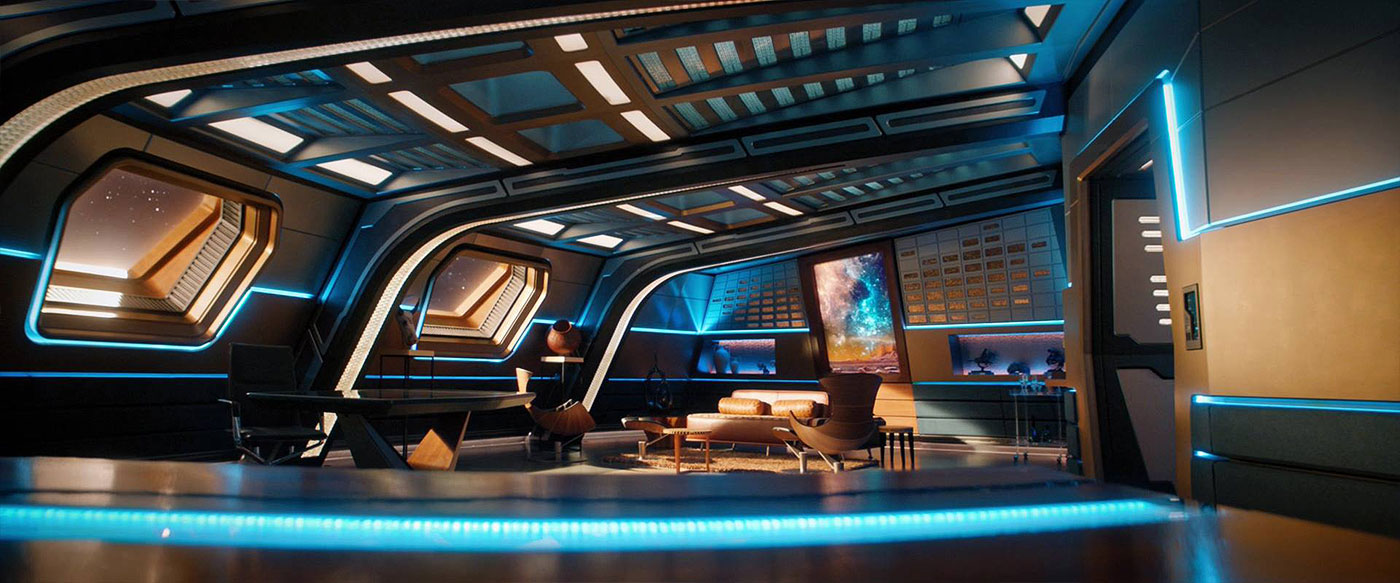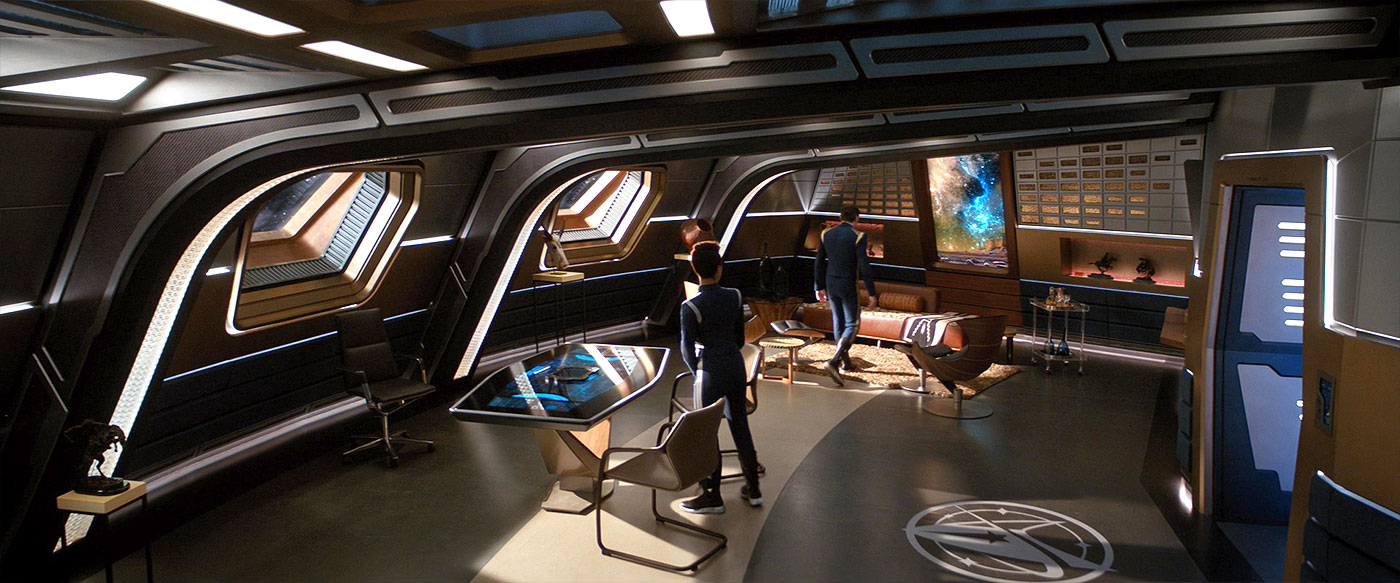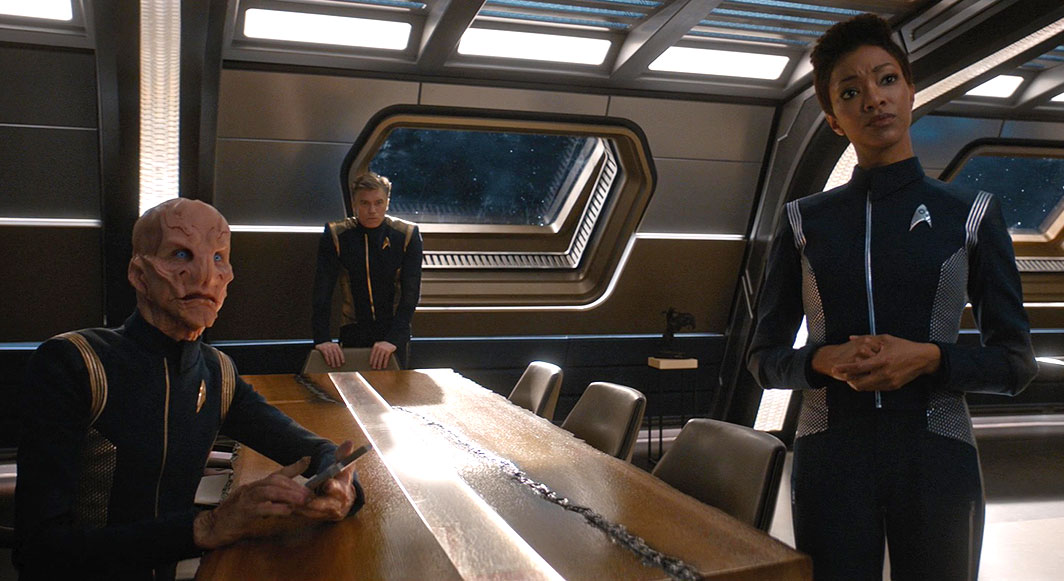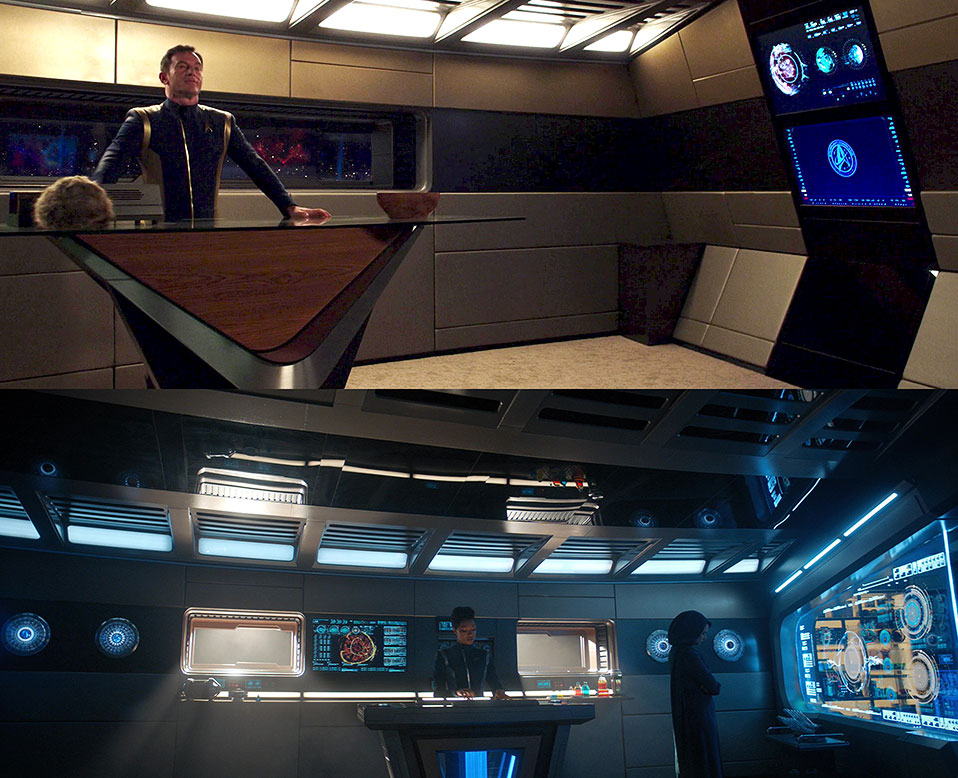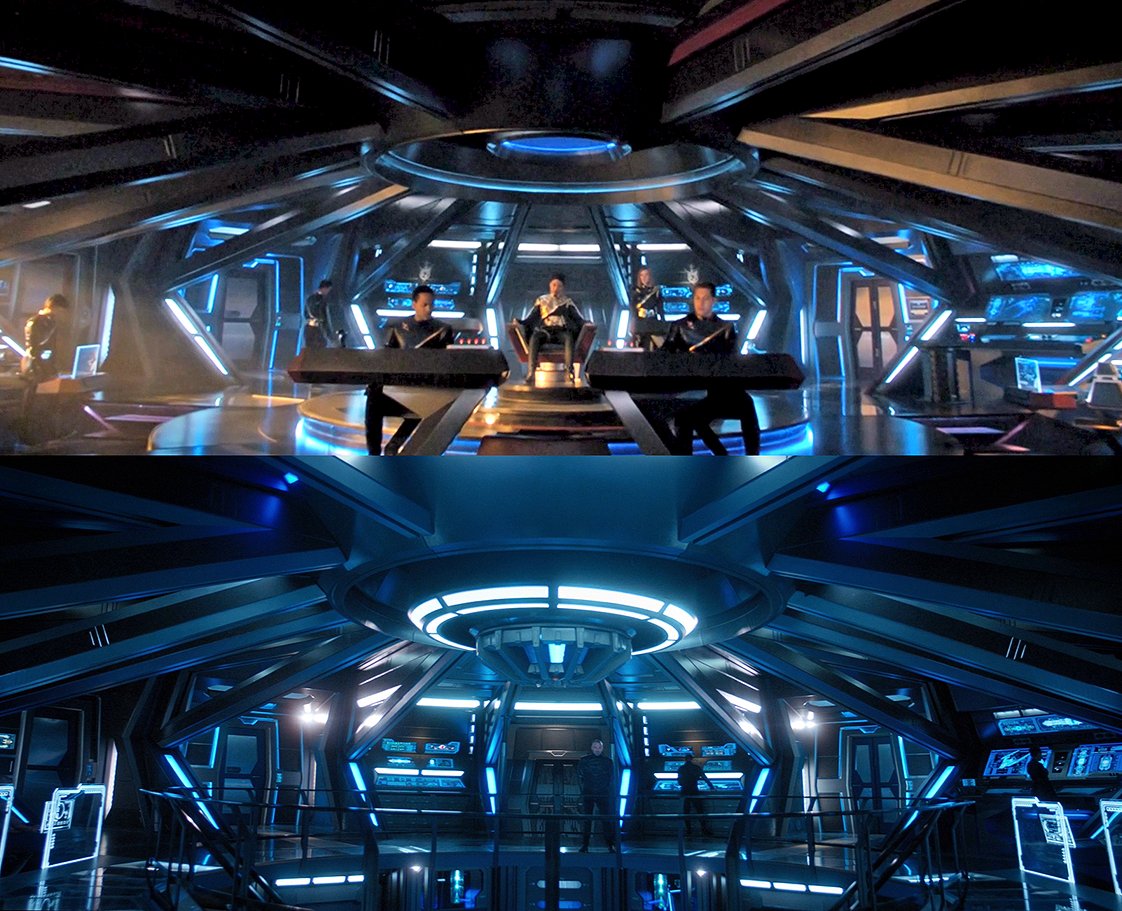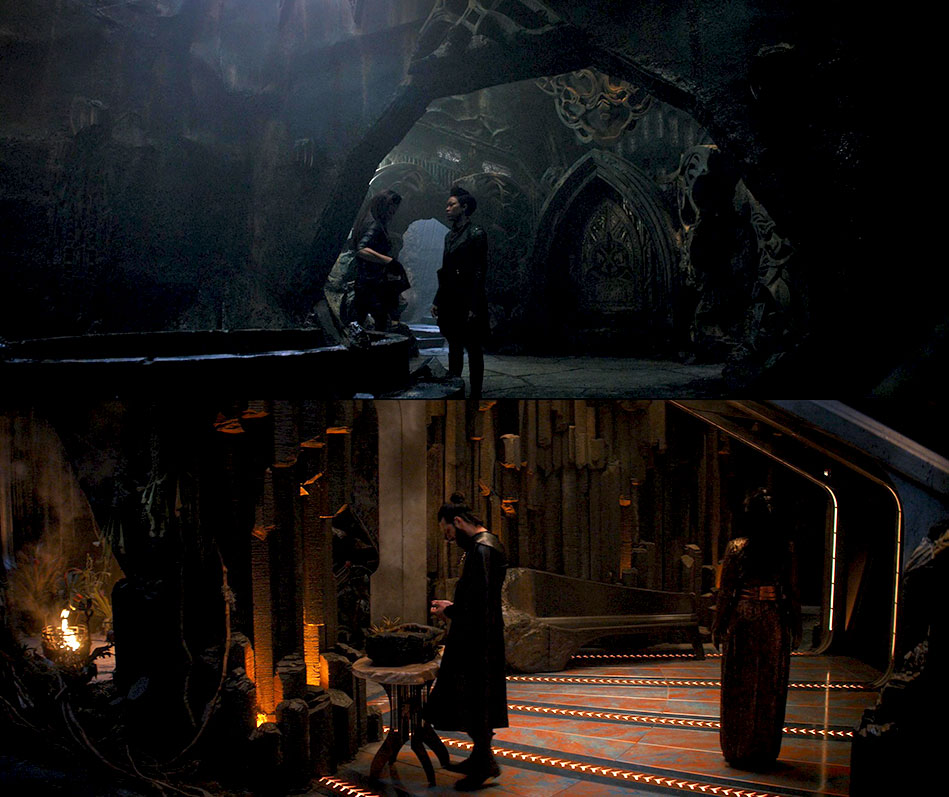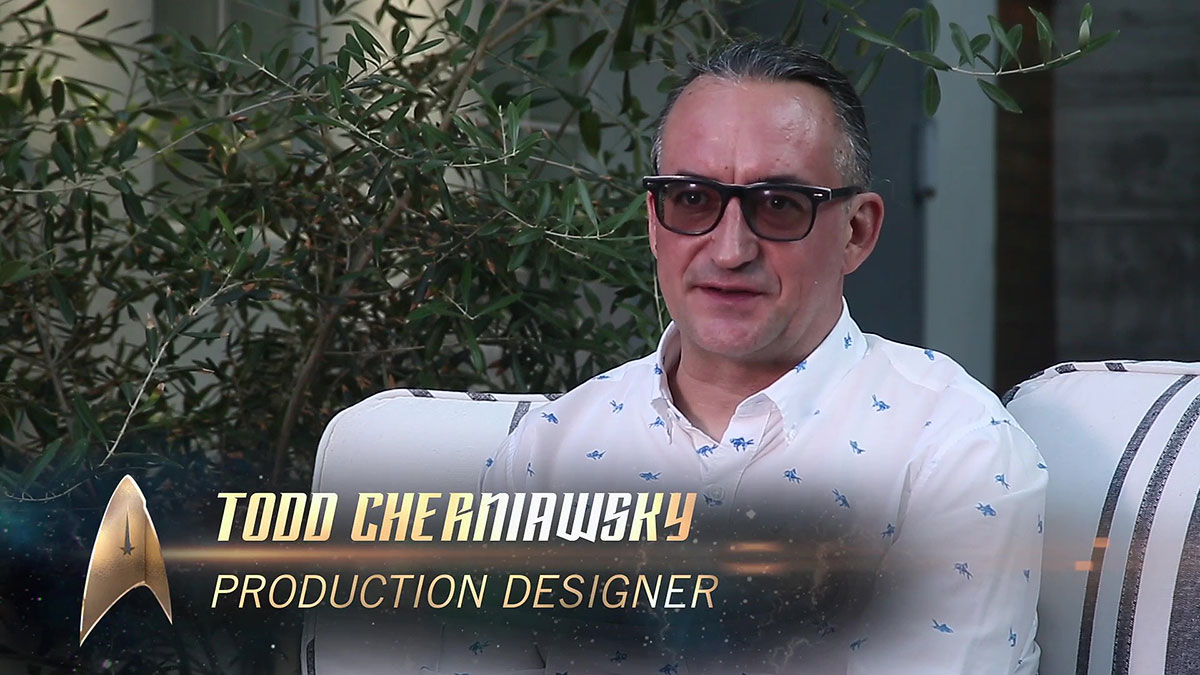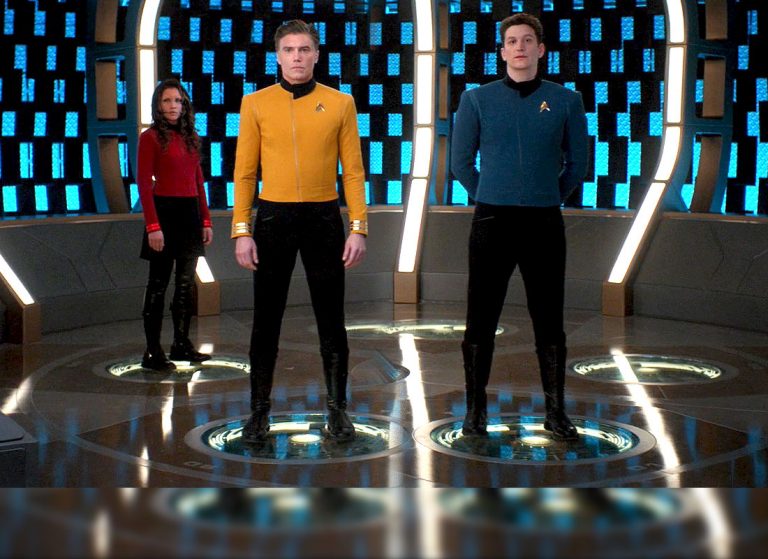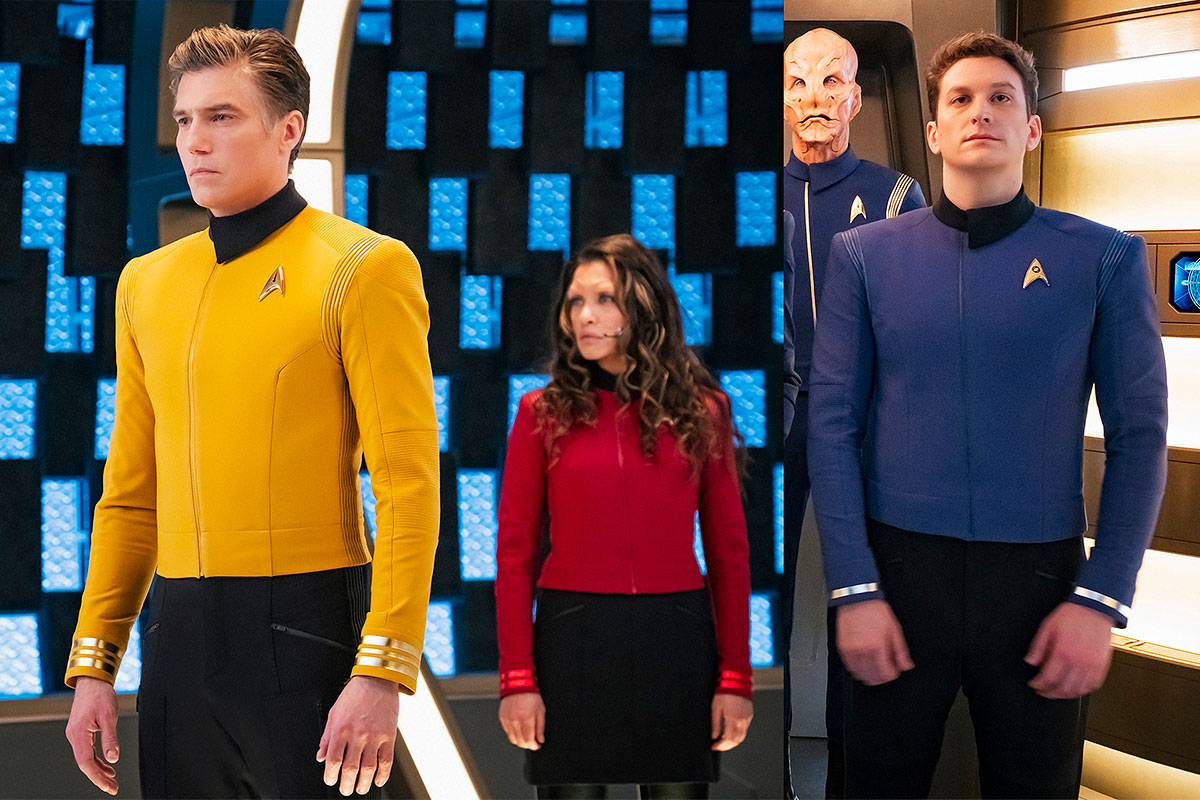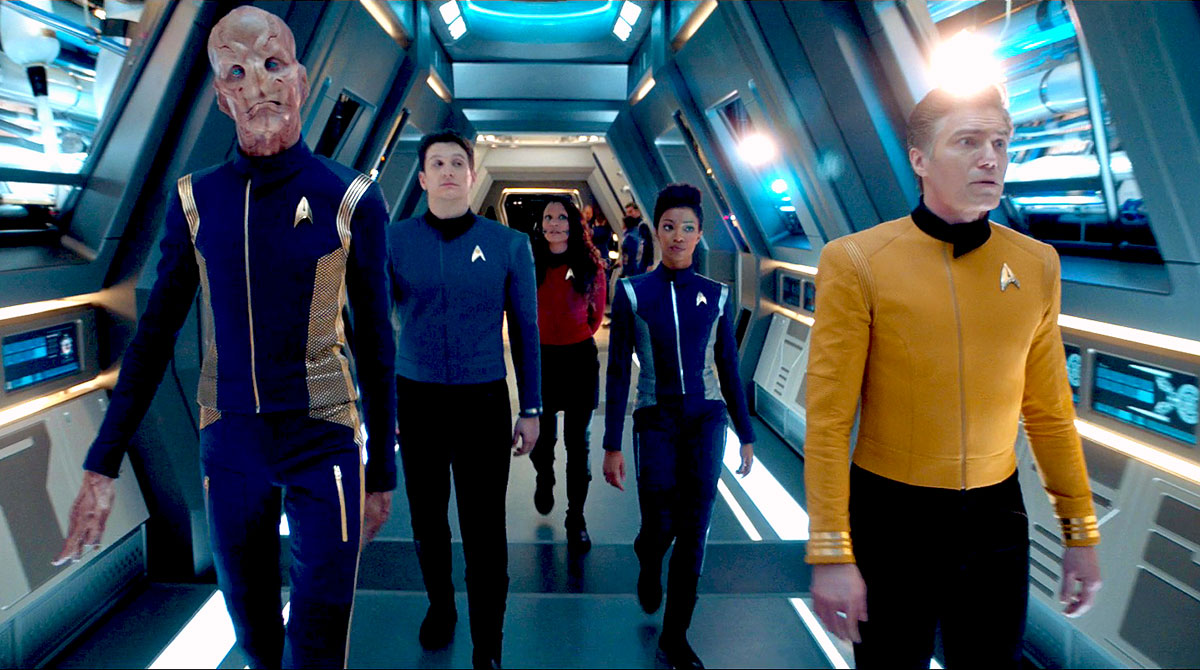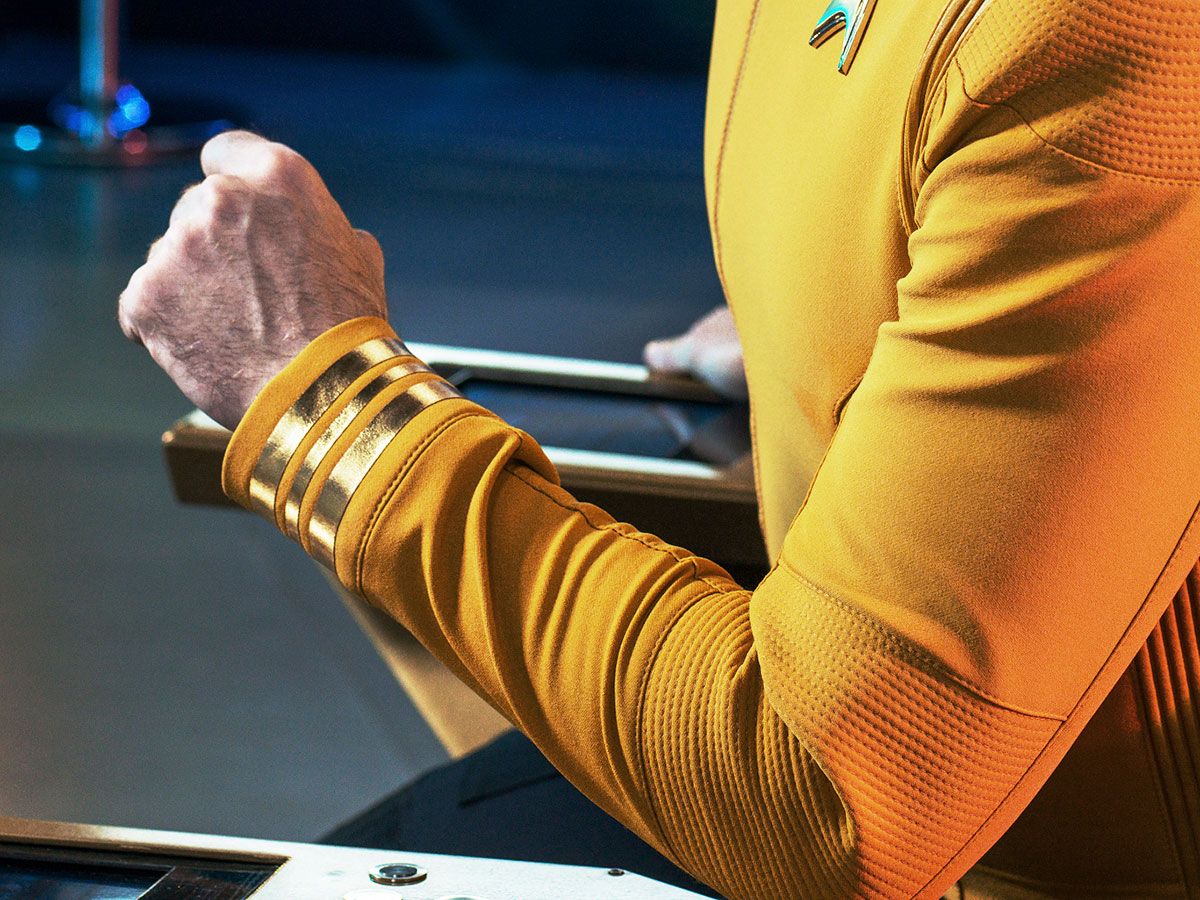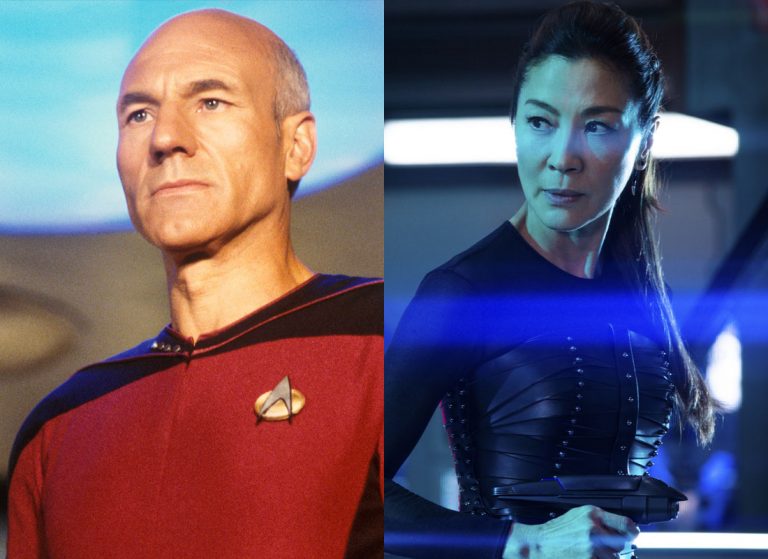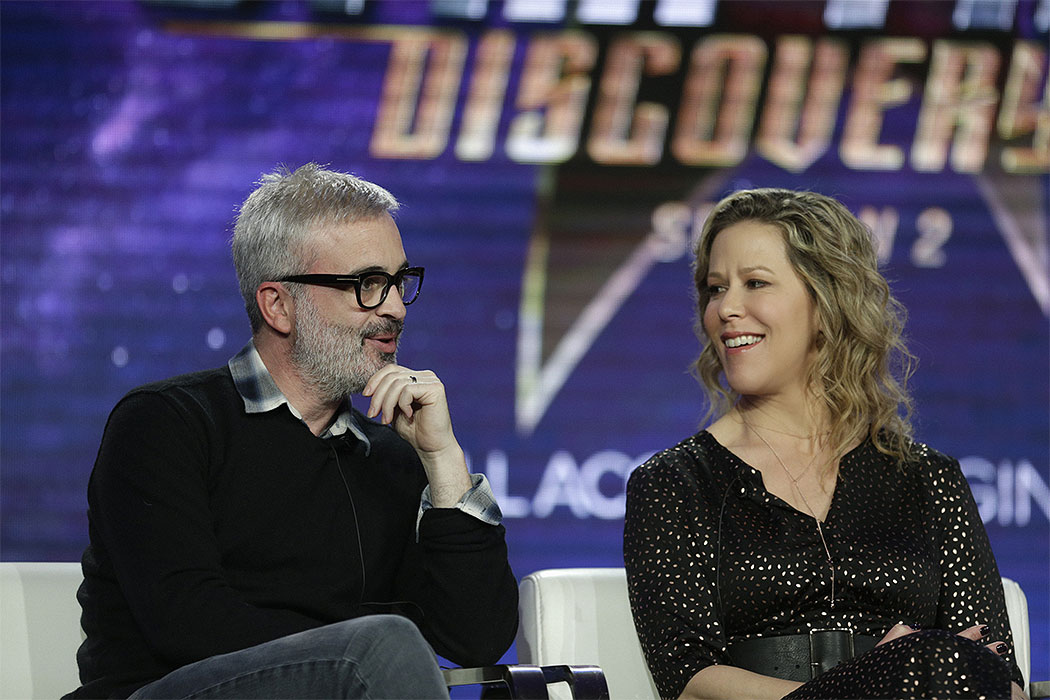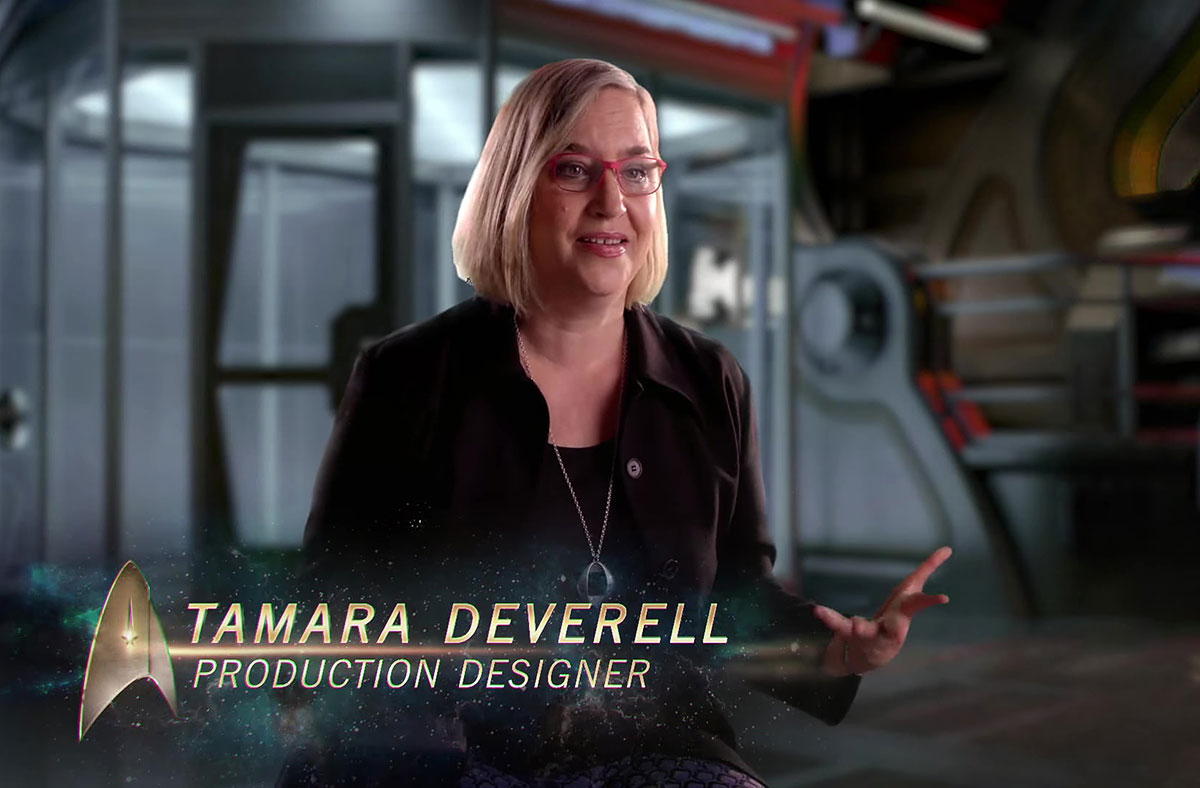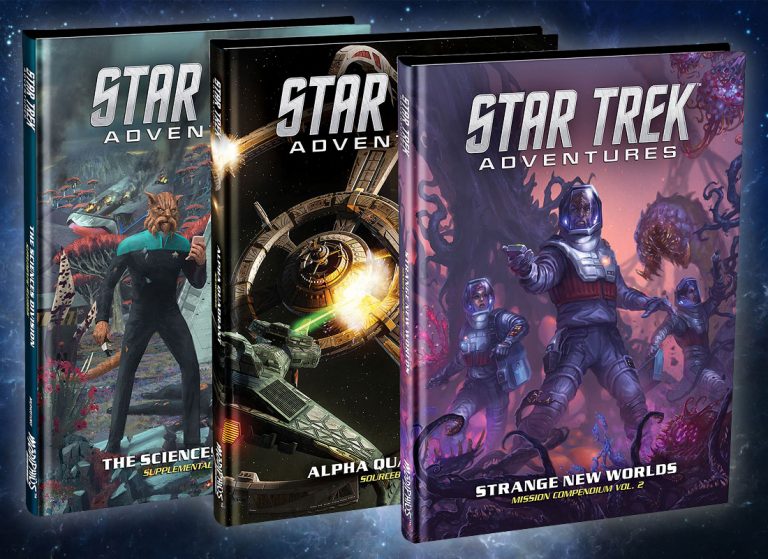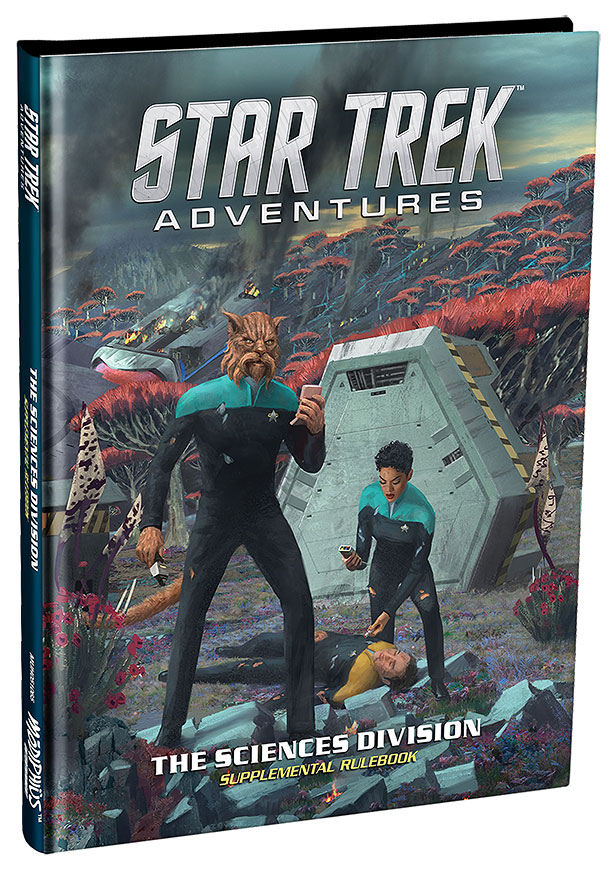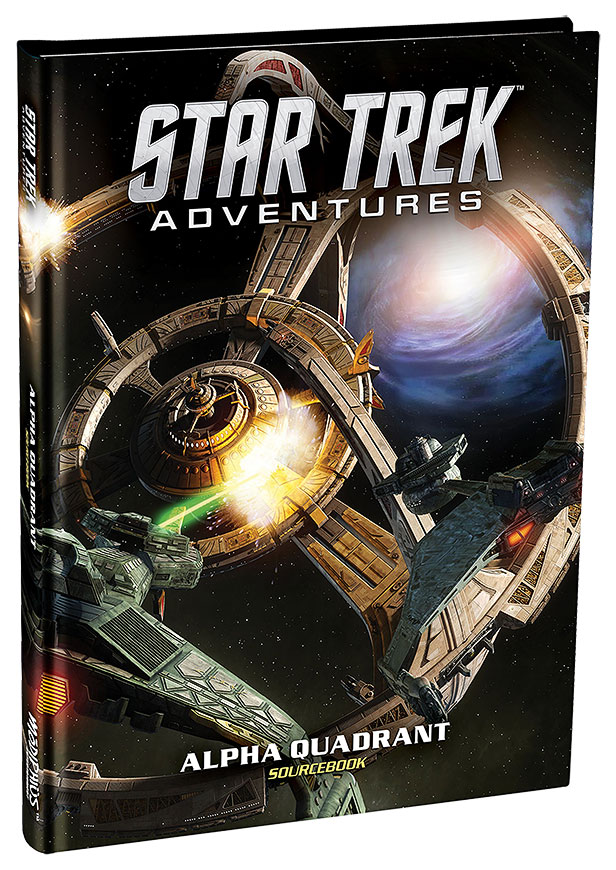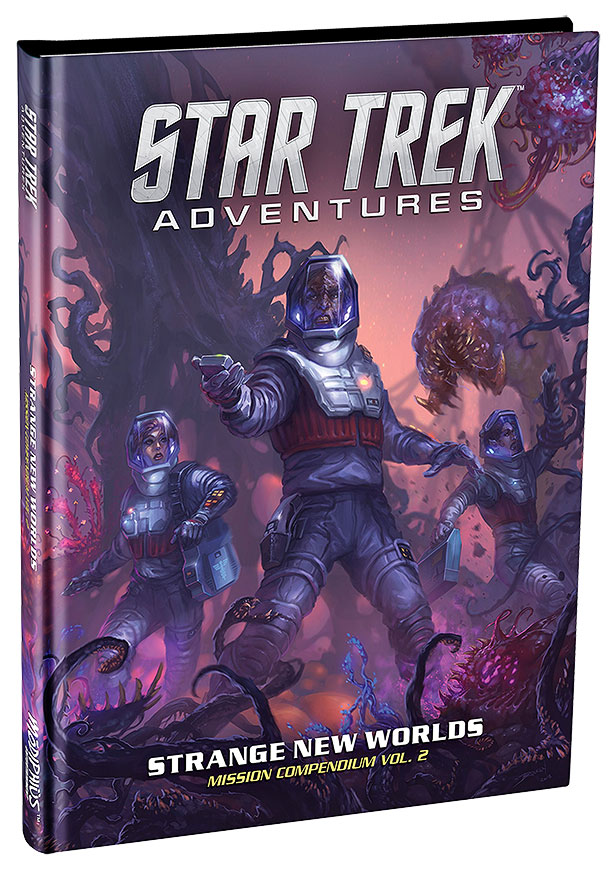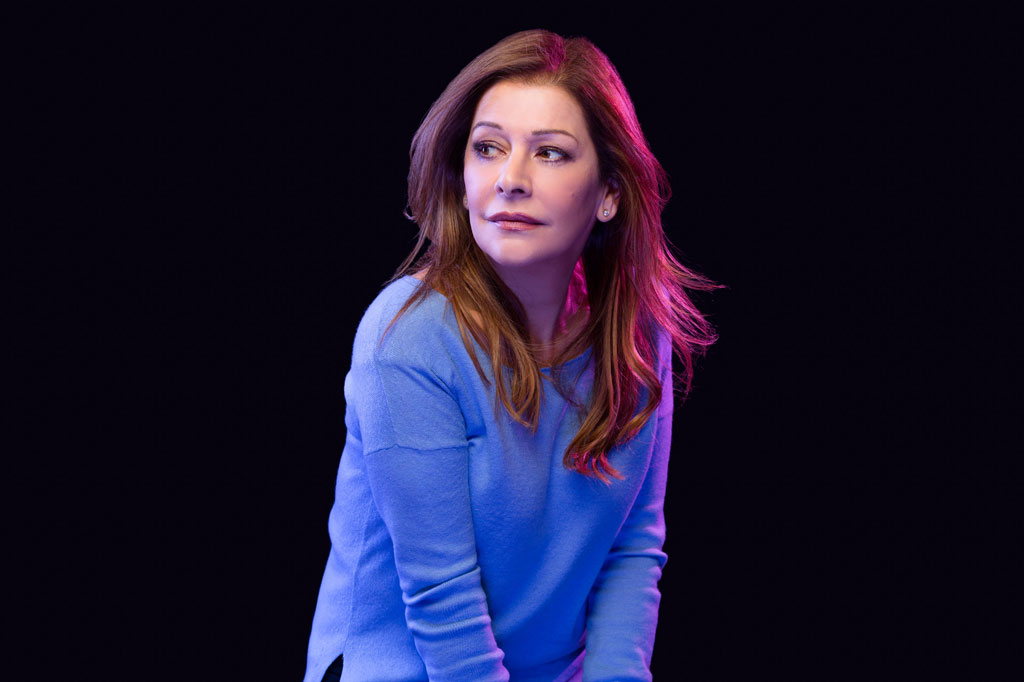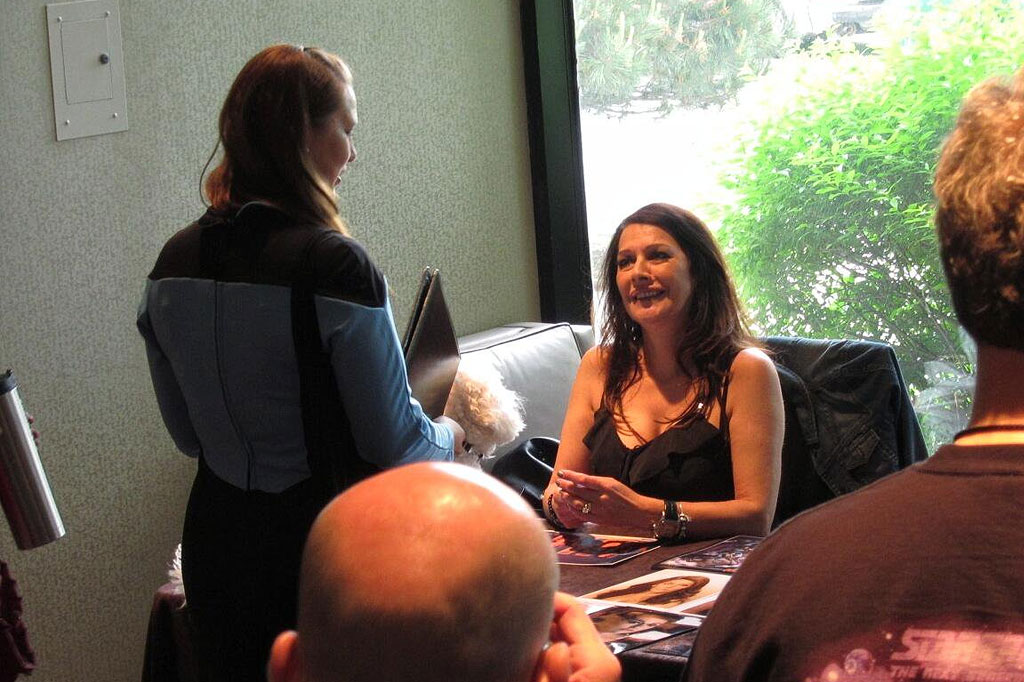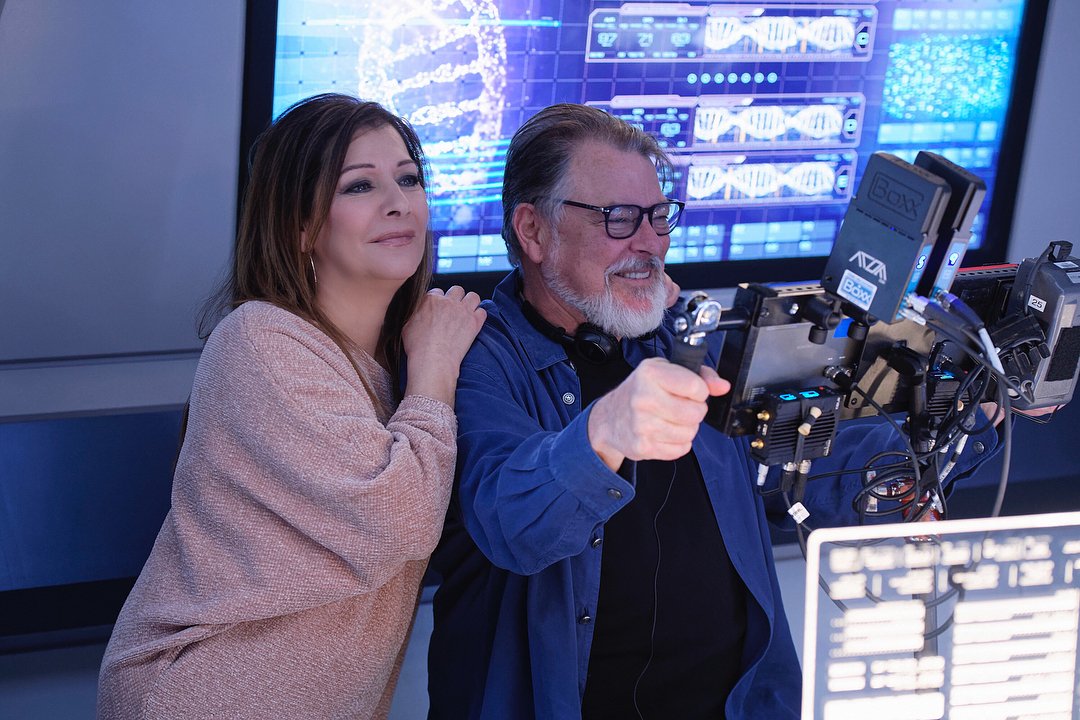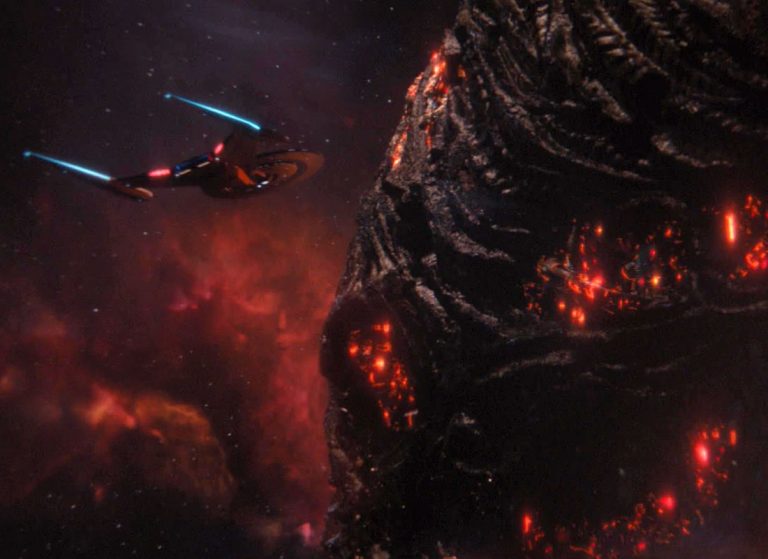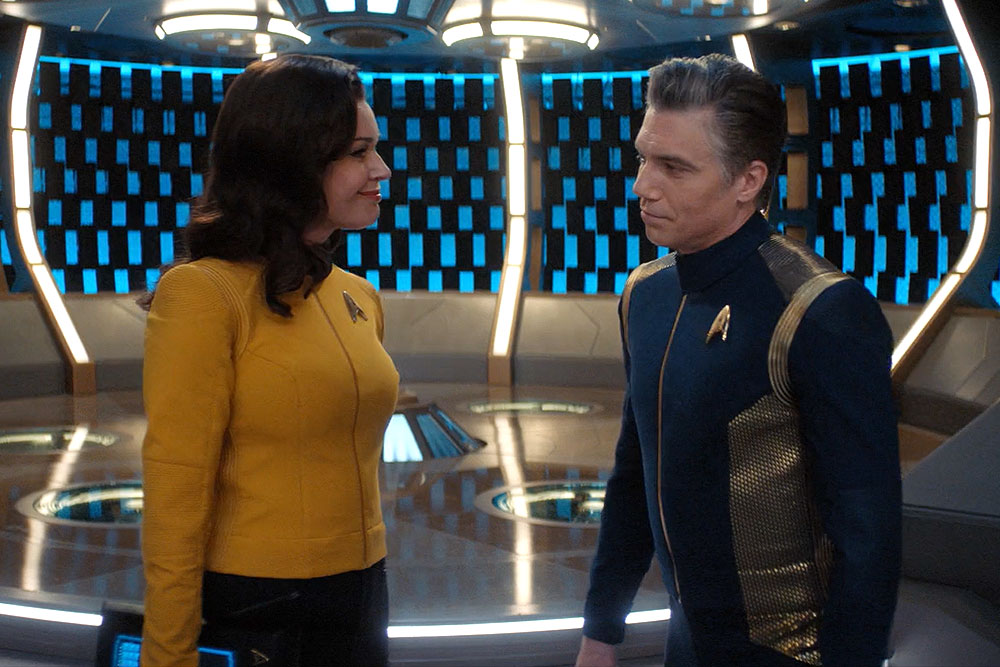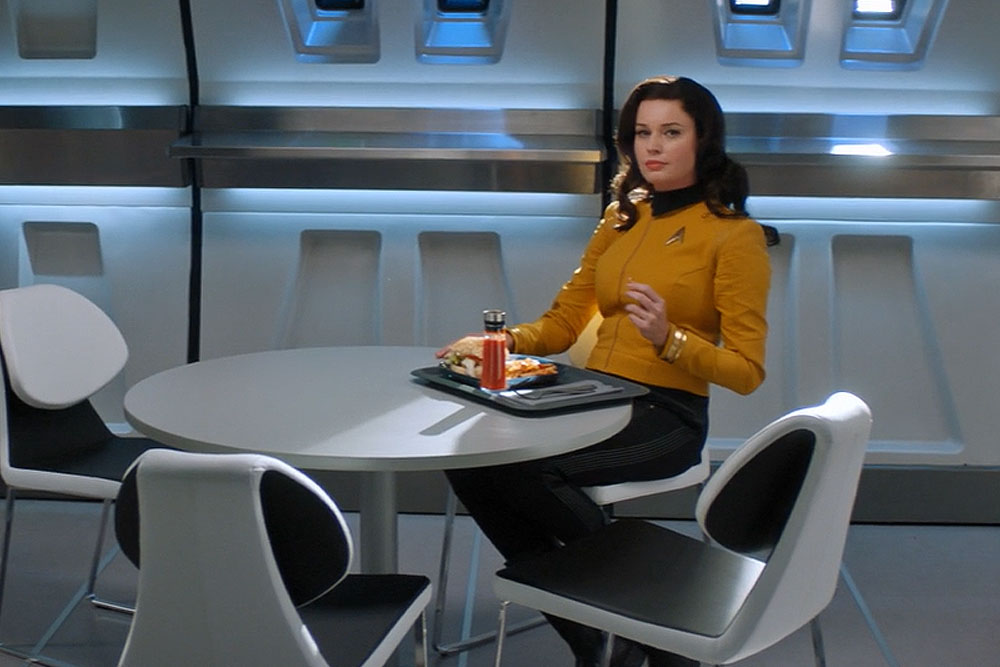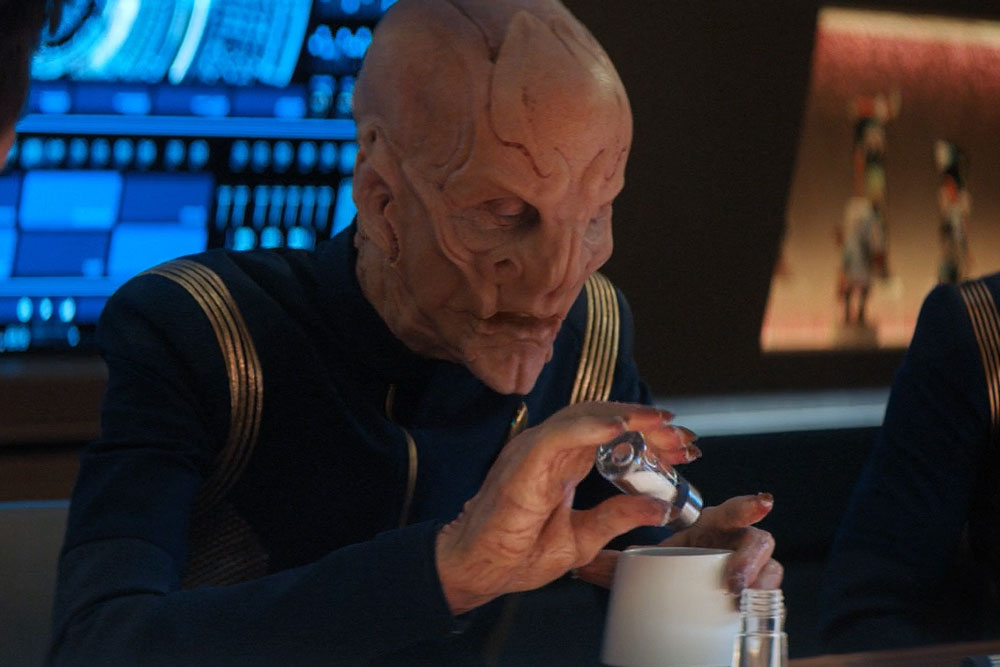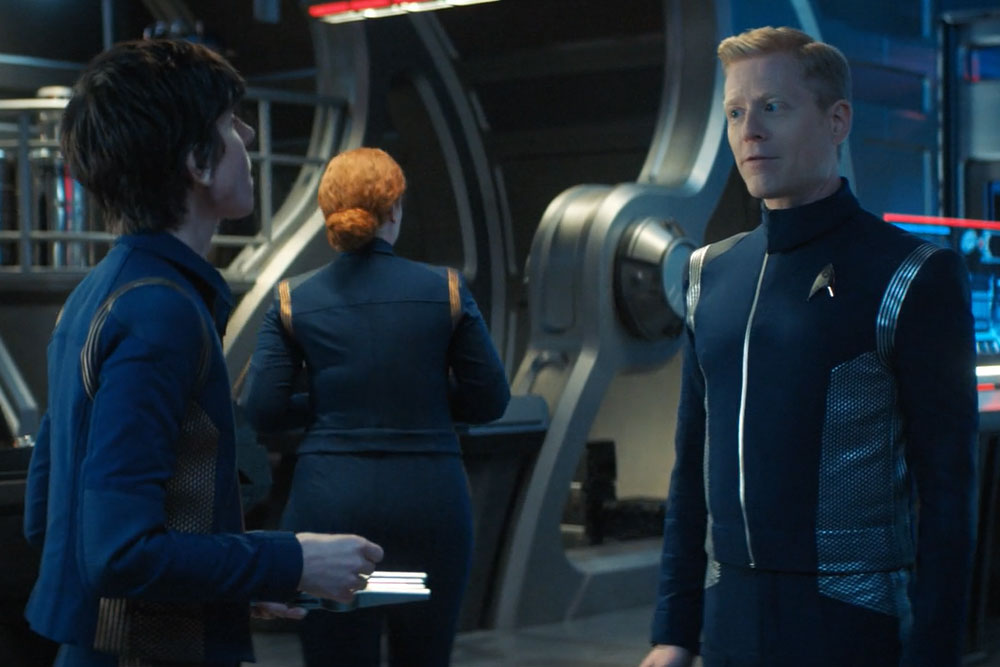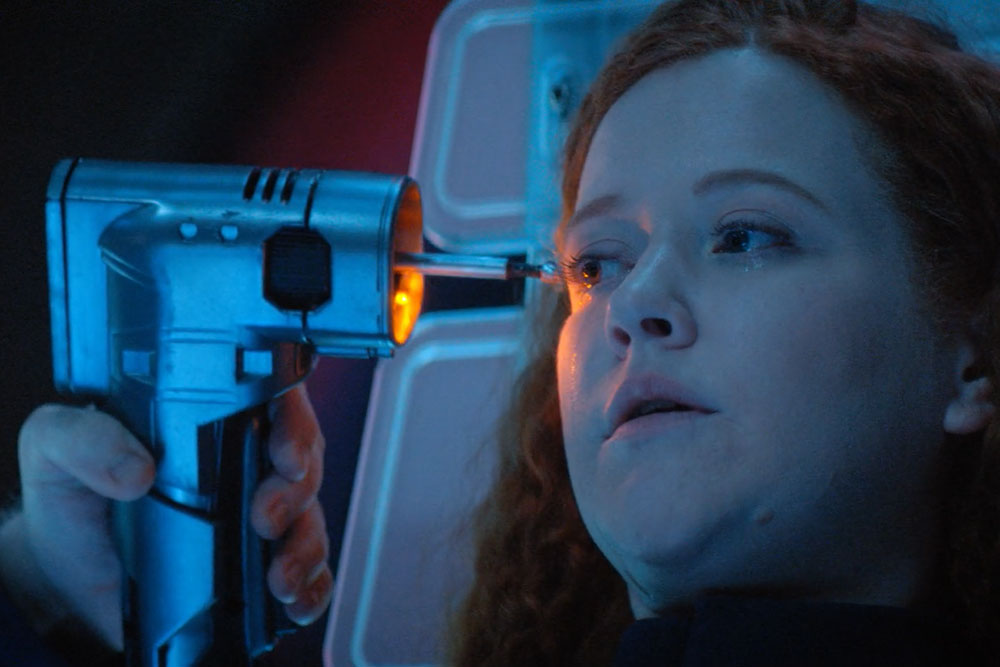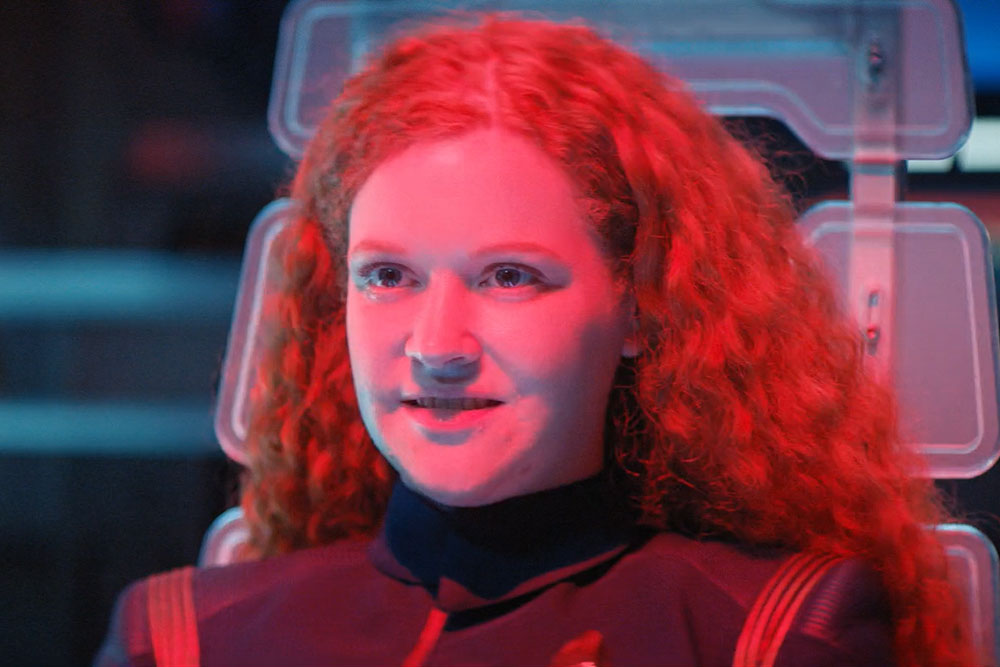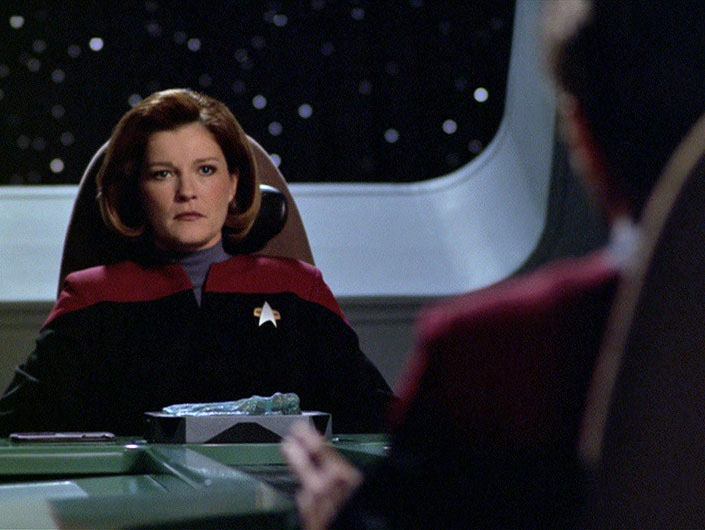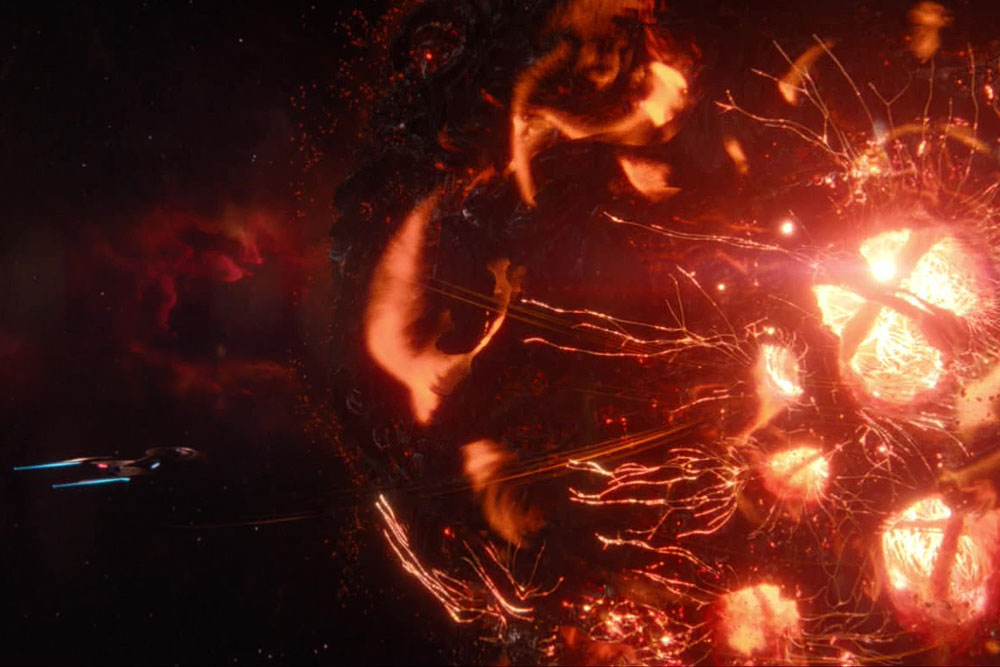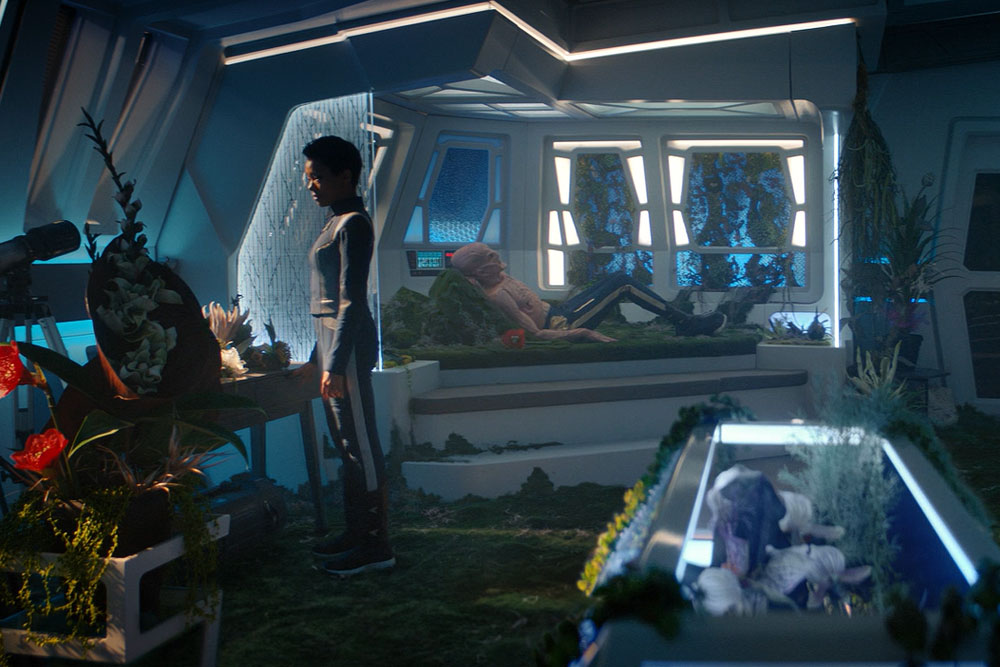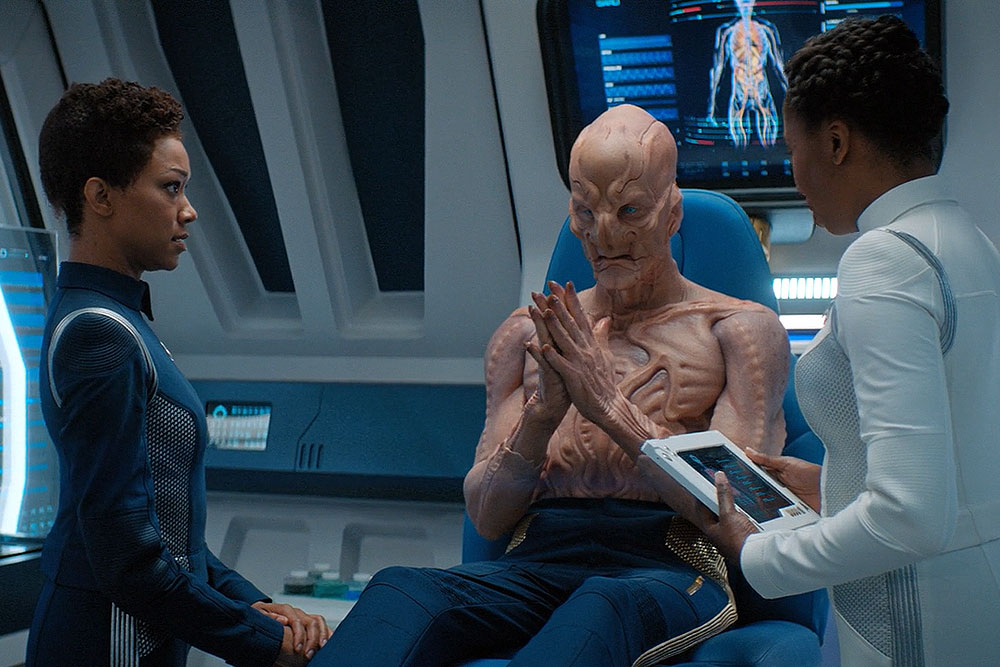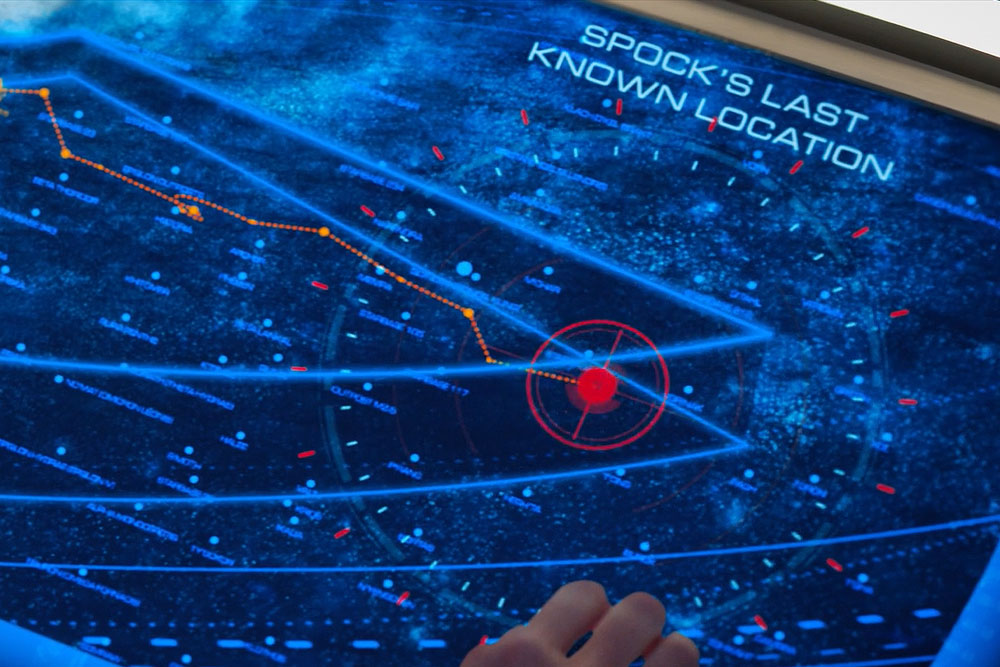Let’s just get right into it, shall we? Hugh Culber is alive, again!
After Voq-infused Ash Tyler (Shazad Latif) killed him in the first season episode “Despite Yourself,” Dr. Hugh Culber (Wilson Cruz) returned to the land of the living in “Saints of Imperfection” by means of the mycelial network. Culber’s death, the green spore that landed on Tilly’s shoulder in “What’s Past is Prologue,” and the May Ahern storyline culminated together this week into a breathless episode packed with emotional moments and touching reunions.
Written by Kirsten Beyer (“Si Vis Pacem Para Bellum”) and directed by David Barrett (“Magic to Make the Sanest Man Go Mad”) “Saints of Imperfection” continues the very strong trend of episodes for Star Trek: Discovery’s second season. After Ensign Tilly (Mary Wiseman) was pulled into the mycelial network by the Jah’Sepp entity masquerading as her middle school classmate May Ahern (Bahia Watson), Stamets (Anthony Rapp) hatches a plan to enter the network and rescue her.
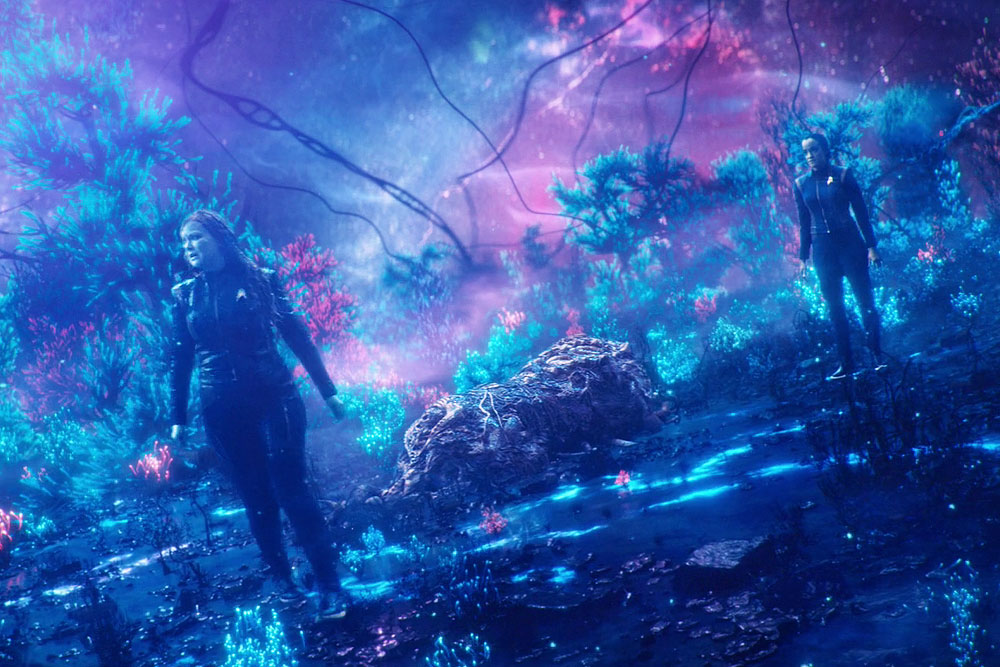
Meanwhile in the network, May enlists Tilly’s help to track down and destroy the “monster” attacking the network from within. Discovery engages a partial spore jump that lodges it between our reality and the network, which allows Burnham (Sonequa Martin-Green) and Stamets to enter and find Tilly.
They accomplish their task, and in the process find that the monster is actually Hugh Culber, whose life energy was funneled into the network following his death — by Stamets in his fugue state following the jump to the Mirror Universe — and has been trying to find his way out ever since.
Science hijinks ensue, in which the Section 31 crew first seen in “Point of Light” work to keep Discovery from falling too far into the mycelial network and killing the crew while Tilly, Stamets, Burnham, and May work together to find a way for Culber to exit the network and return to our reality.
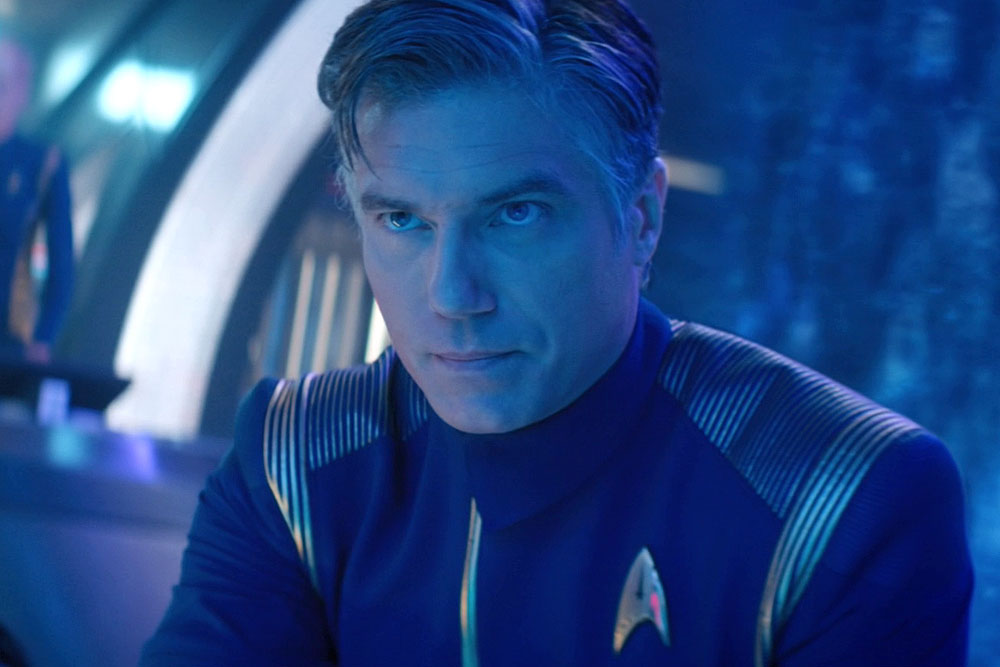
There’s a lot of things happening here — perhaps almost too much, in some ways. We’ll get to that, but first let’s talk about some of the highlights from about this episode – and much of it was excellent.
The script for “Saints of Imperfection” is as good as the best that Discovery has offered us to date, and Kirsten Beyer is now responsible for resurrecting two major Star Trek characters (see Kathryn Janeway’s resurrection in the Star Trek: Voyager novel “The Eternal Tide”) with aplomb.
David Barrett’s direction was also as good in this episode as in the fan favorite “Magic to Make the Sanest Man Go Mad,” giving us a comfortable Star Trek feel but taking advantage of the Discovery budget to show us grand spectacles.
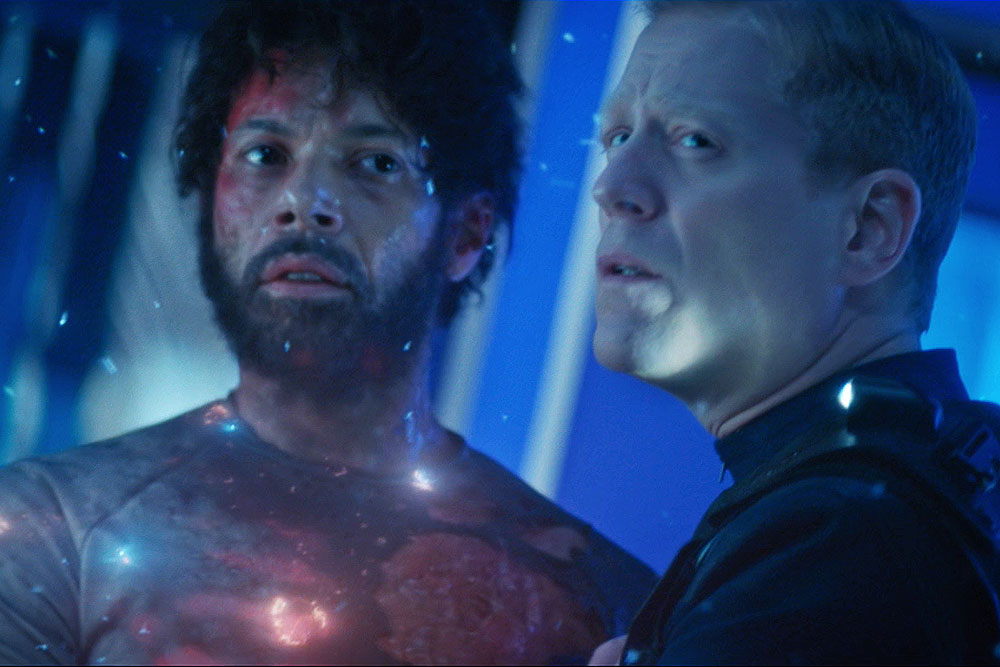
Moreover, you could not ask for better from these actors – I genuinely cried when Stamets and Culber were reunited, cried again when it seemed like Culber might not make it out alive, and cried a third time when the cocoon dissolved and Culber whispered “Paul.”
This episode was also an acting powerhouse for Mary Wiseman, who showed us Tilly’s rage, fear, forgiveness, and friendship with such authenticity that her performance was not outshone by Rapp and Cruz.
However, it seems to be partially a combination of being modern television, having a shorter season, and an intentional choice by the Disocvery writers’ room, but Discovery episodes rarely offer much of an opportunity for a pause and reflection on the series’ events.
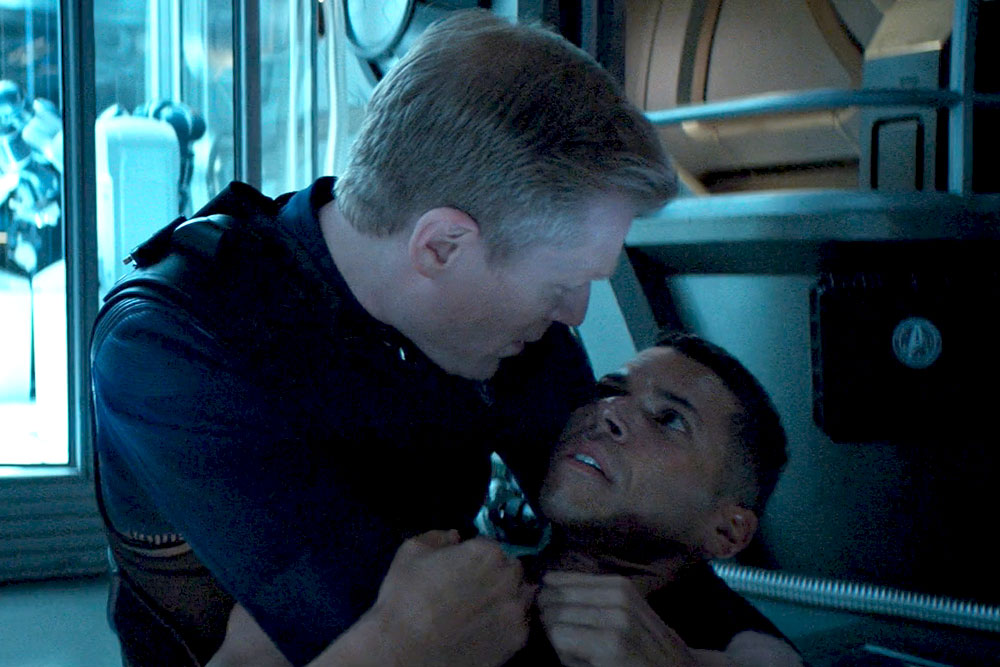
Culber’s death, his post-death interactions in the network with Stamets, Stamets’ grief at the death of Culber, and now the resurrection of Culber whipped past at a breakneck pace. Stamets’ grief over the loss of his partner was effectively confined to a few scenes in the season premiere – his role in subsequent episodes were either tied to the plot (“New Eden”) or as part of the Tilly/May story (“Point of Light” and “An Obol for Charon.”)
Were these scenes not in the hands of such fabulous actors, I think they might fall flatter, and the resurrection of Culber would not have felt as meaningful.
It was a beautiful moment, but the episode was also stuffed with Section 31 and the almost interminable “Where is Spock?” story that crowded it out unnecessarily. Given that we got no closer to finding Spock, that whole plotline could have been set aside for a week, and we would have netted back a significant amount of time to play out the mycelial story.
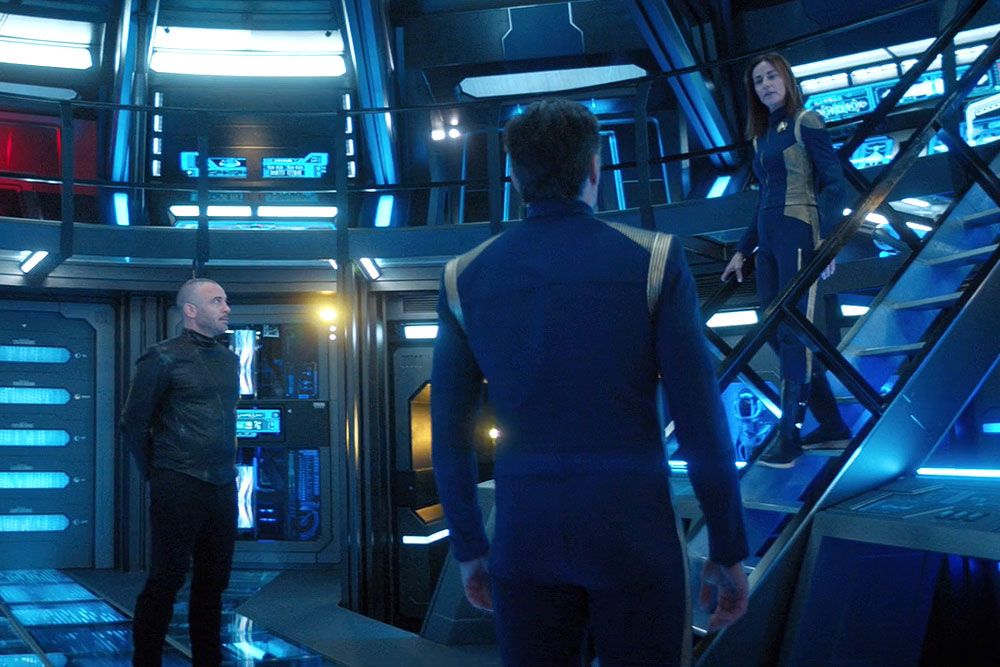
Let’s talk Section 31.
The episode opens with Discovery pursuing Spock’s shuttle, only to capture it and find Spock is not aboard – but Georgiou (Michelle Yeoh) is. Discovery is contacted by Leland (Alan van Sprang), an apparently “old friend” of Captain Pike (Anson Mount), and the two argue over jurisdiction.
Leland and Georgiou are important supporting players in the effort to retrieve Tilly (and by extension Culber,) and at the end of the episode Admiral Cornwell (Jayne Brook) appears to mediate between Pike and Leland.
It is now clear that at this point in the Star Trek timeline, Section 31 is a formally-sanctioned division of Starfleet Intelligence. “Section 31 might not be the shining beacon of righteous conduct you want it to be,” Corwnell says, “but they are a critical intelligence division and we have more pressing priorities than debating Article 14 of Starfleet’s charter. Nation building is never pretty. That is the unappetizing truth, and you know it.”
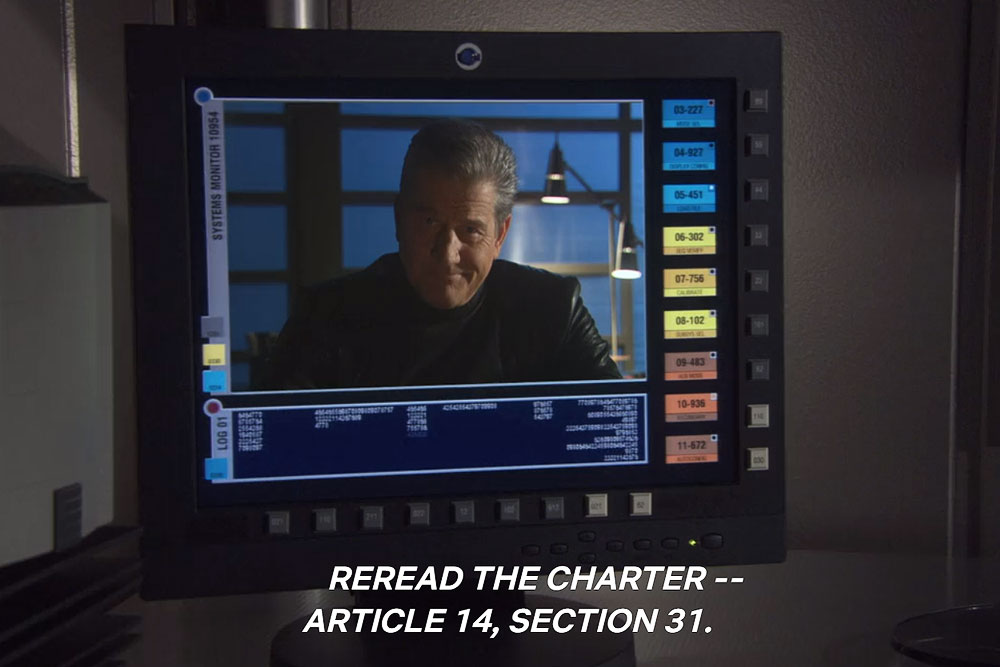
I’m not sure that sits entirely right with me given the organization’s appearances on Enterprise, but I’m curious to see where they go with this. It seems likely that the Section 31 arc going forward will be the story of how they go from being a sanctioned black ops division of Starfleet Intelligence to being an entirely disavowed, off-the-books organization — something franchise boss Alex Kurtzman has already hinted is coming:
“If you know Section 31, you know that by the time Deep Space 9 comes around they’ve gone underground and they are this mysterious organization – but there’s nothing official about it,” he told Digital Spy.
“[In Discovery], Section 31 has a badge. There’s a ship and all these different things, so the question is: how do they get from here to there?”
The return of Section 31 also means a return for Tyler after the events of “Point of Light,” as he is assigned to be a Section 31 liaison with Starfleet aboard the Discovery. Pike clearly resents his presence and does not trust him, but because there is so much else going on in the episode we don’t really get much of an opportunity to see how Tyler’s return to Discovery is impacting the rest of the crew.
Hopefully that will come in future episodes, particularly now the man he murdered is alive again. (He does have a cool communicator, though!)
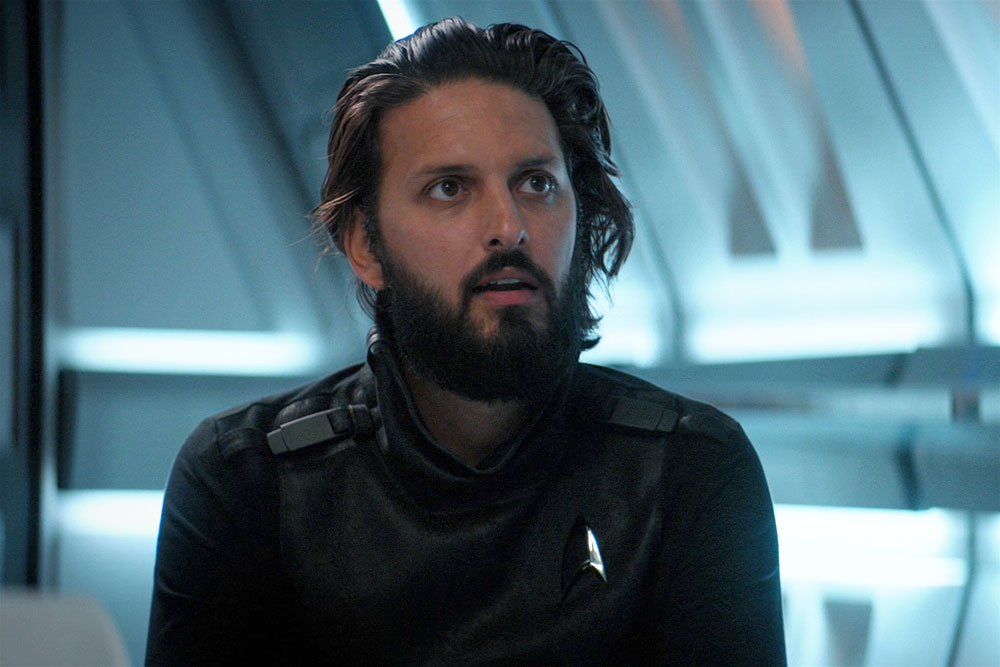
The relationship between Burnham and Georgiou continues to be delicious to watch, thanks to Michelle Yeoh’s portrayal of the former Terran emperor – a role in which she clearly delights. “I’m sure you need to get back to your snake pit,” Burnham tells her, to which Georgiou just hisses in response.
Georgiou’s decision to come to Discovery’s aid, even against Leland’s orders, does potentially indicate an ember of redemptive potential in the character — and I hope they explore that further.
And lastly, the only thing I truly didn’t like about this episode – that the “where is Spock?” story was strung along into its fourth episode without significant advancement. The danger of serialization for a show like Discovery that has other plotlines to advance is the need to find small ways to push forward with the larger narrative, even in a side story.
That hasn’t worked for the last two weeks, though, and is at risk of making Spock’s eventual appearance frustrating and a little boring. Spock should never be either of those things.
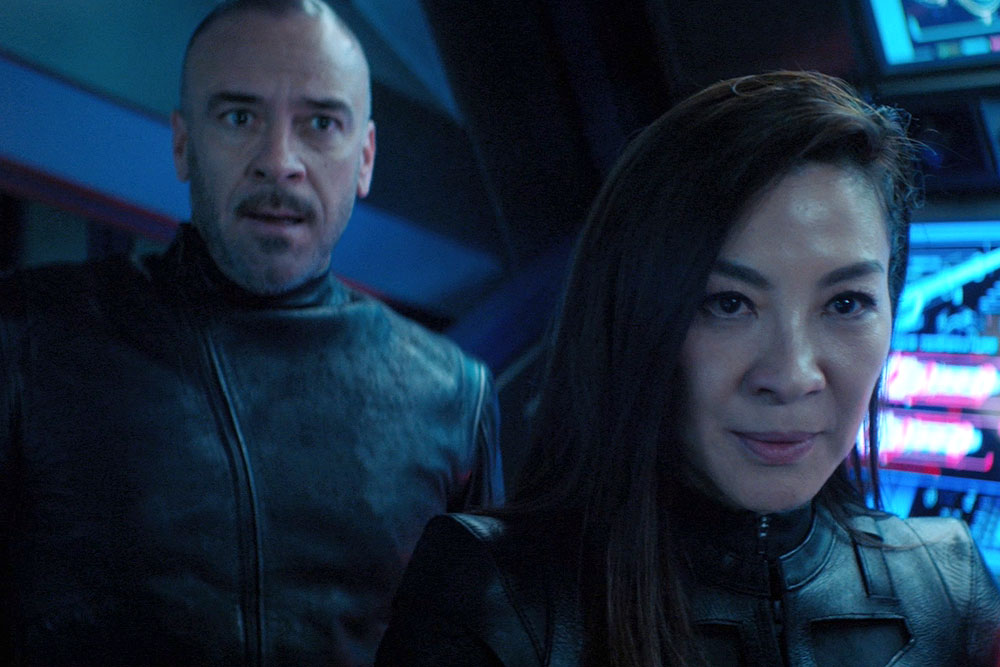
Overall, “Saints of Imperfection” was well written, well directed, and an acting powerhouse for Mary Wiseman, Anthony Rapp, and Wilson Cruz. It resurrected a fan-favorite character in an emotionally satisfying way, using pathos and humor to their maximum effect. This episode will likely be remembered as a favorite by many, and deservedly so.
I’m excited to see how Culber reintegrates to the crew and renews his relationship with Stamets, but I am very much hoping we finally get to catch up with Spock soon.
![]()
Star Trek: Discovery returns next week with “The Sounds of Thunder.”

